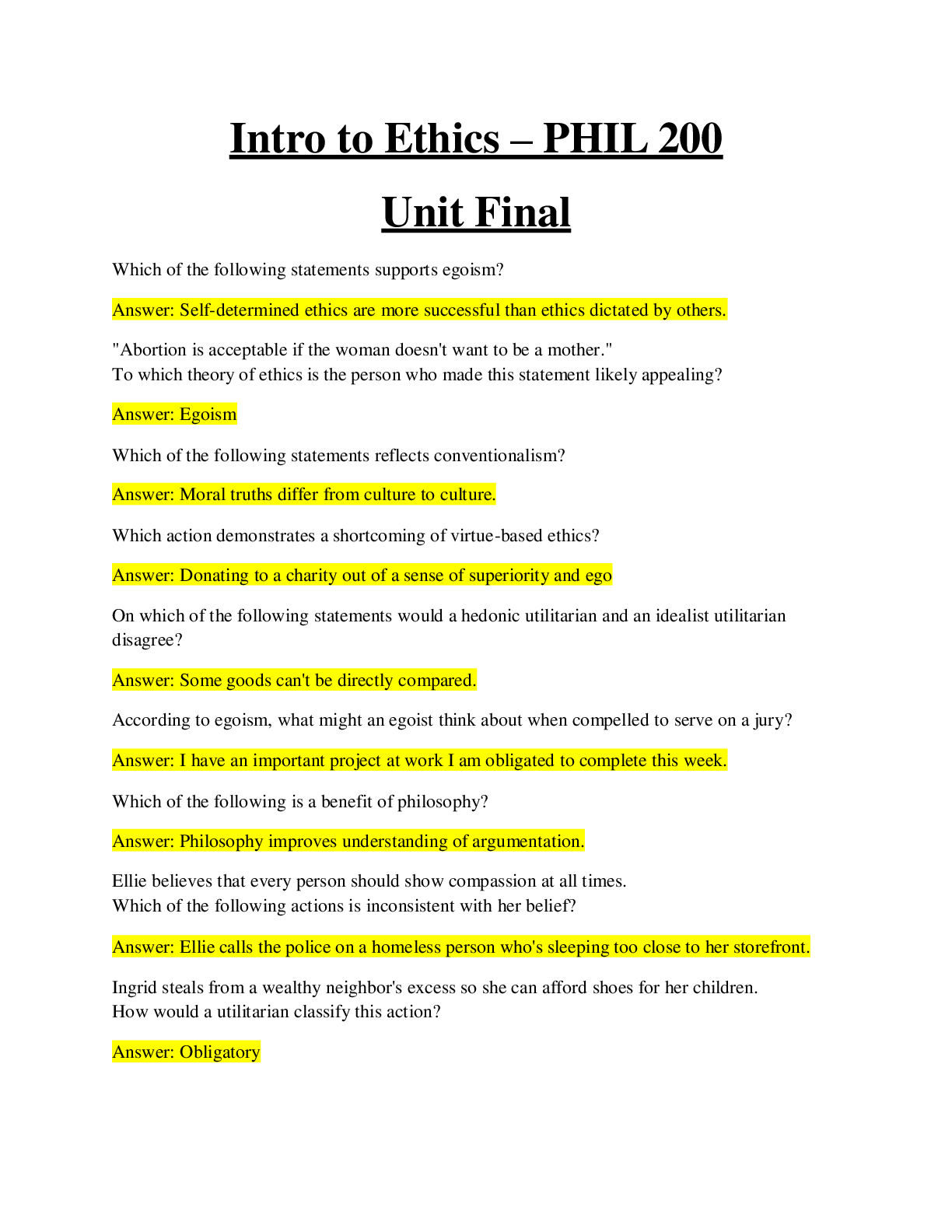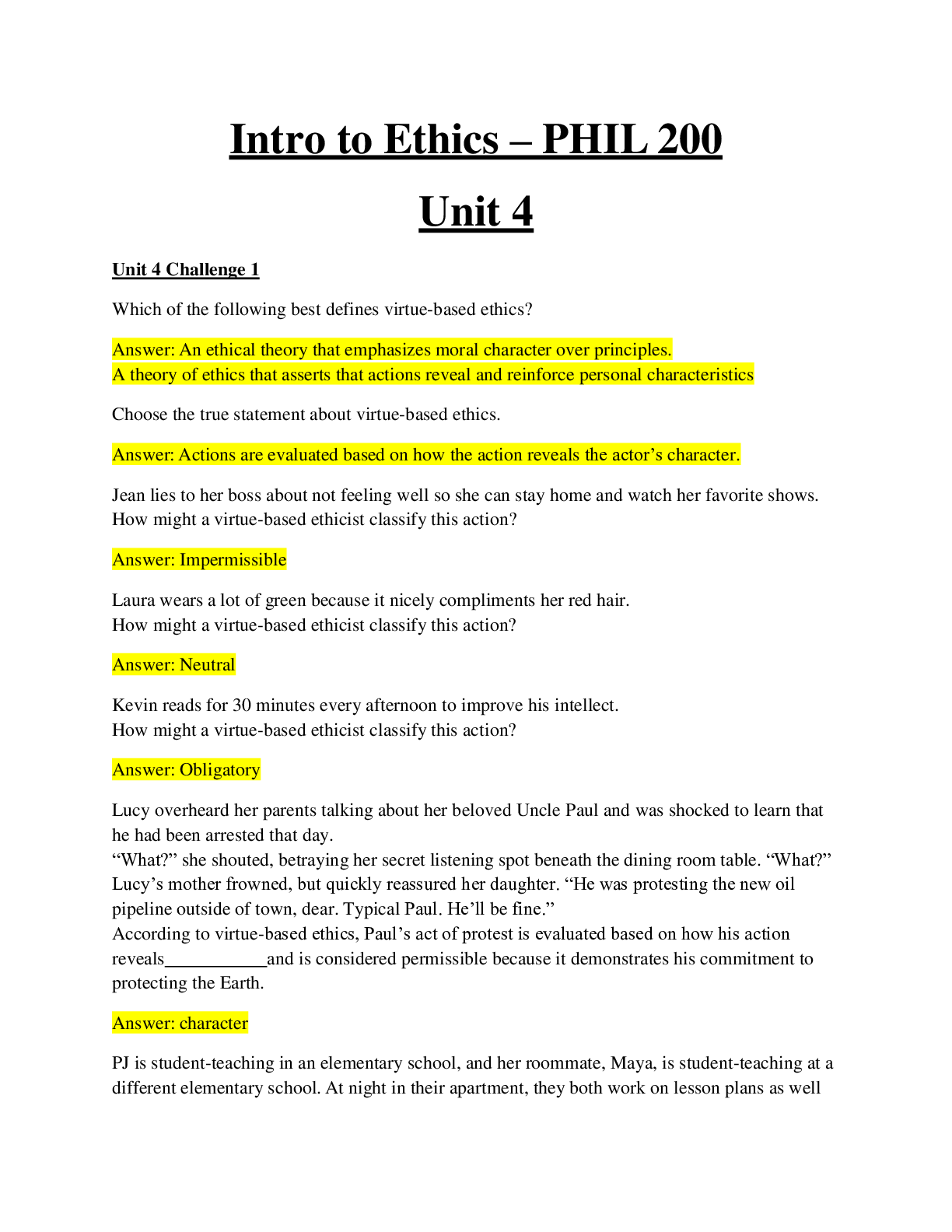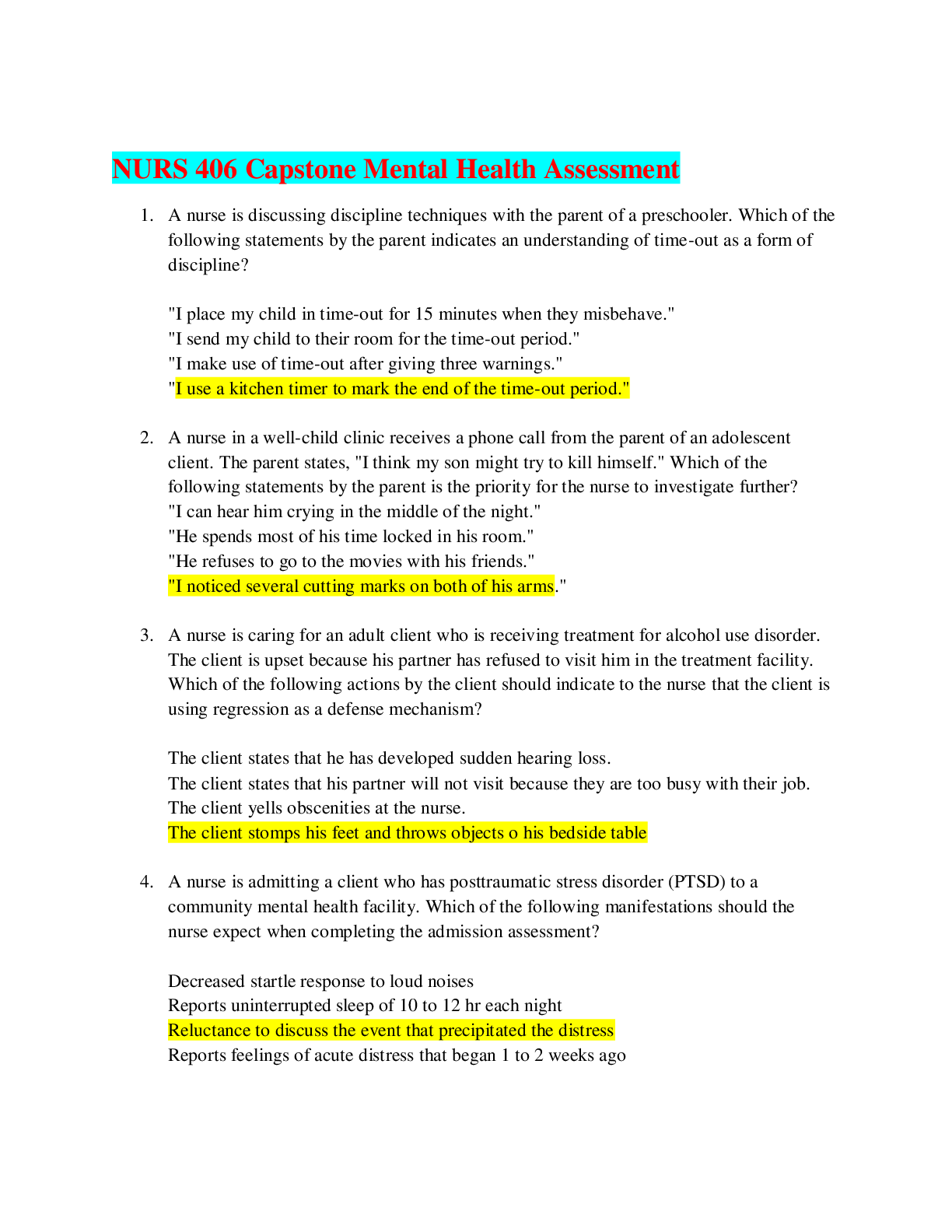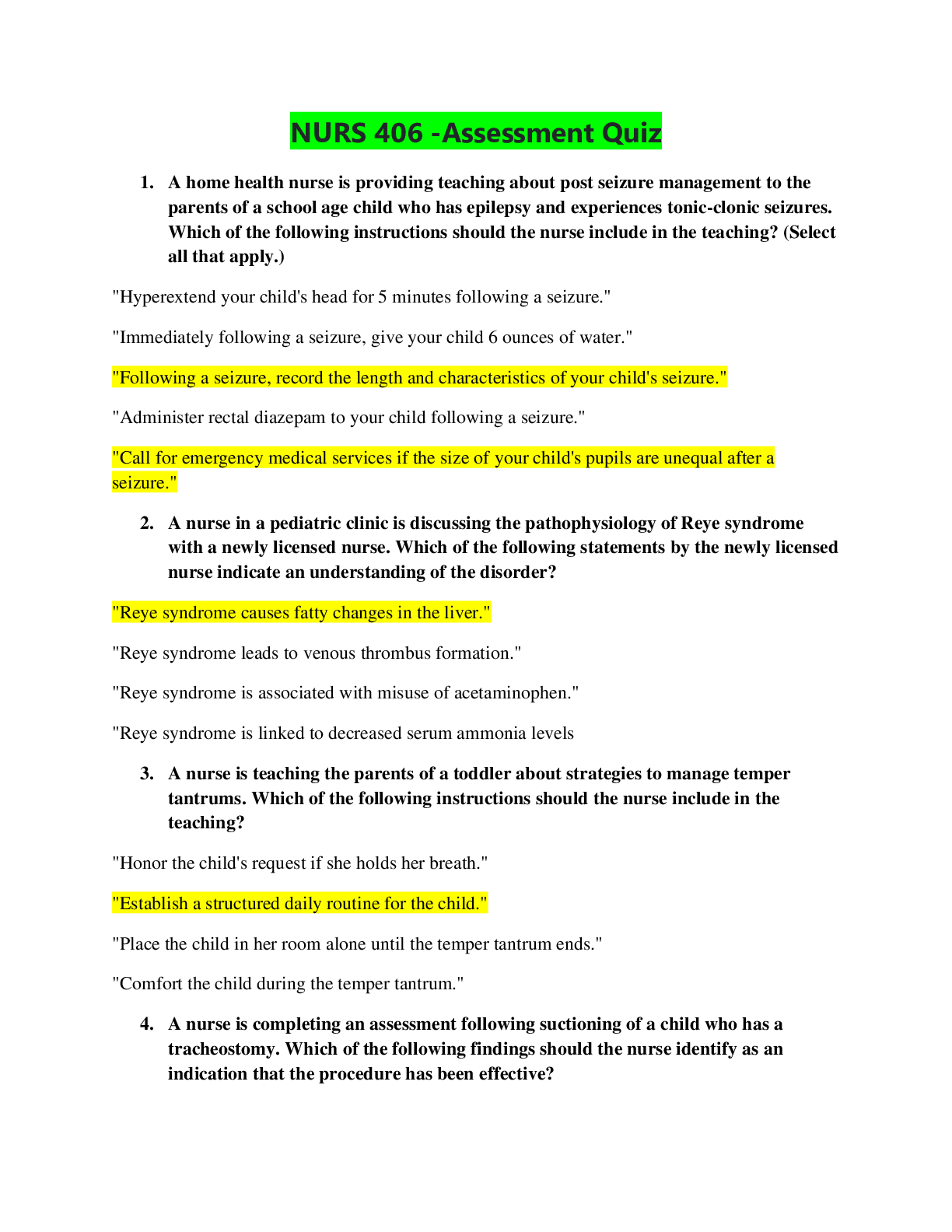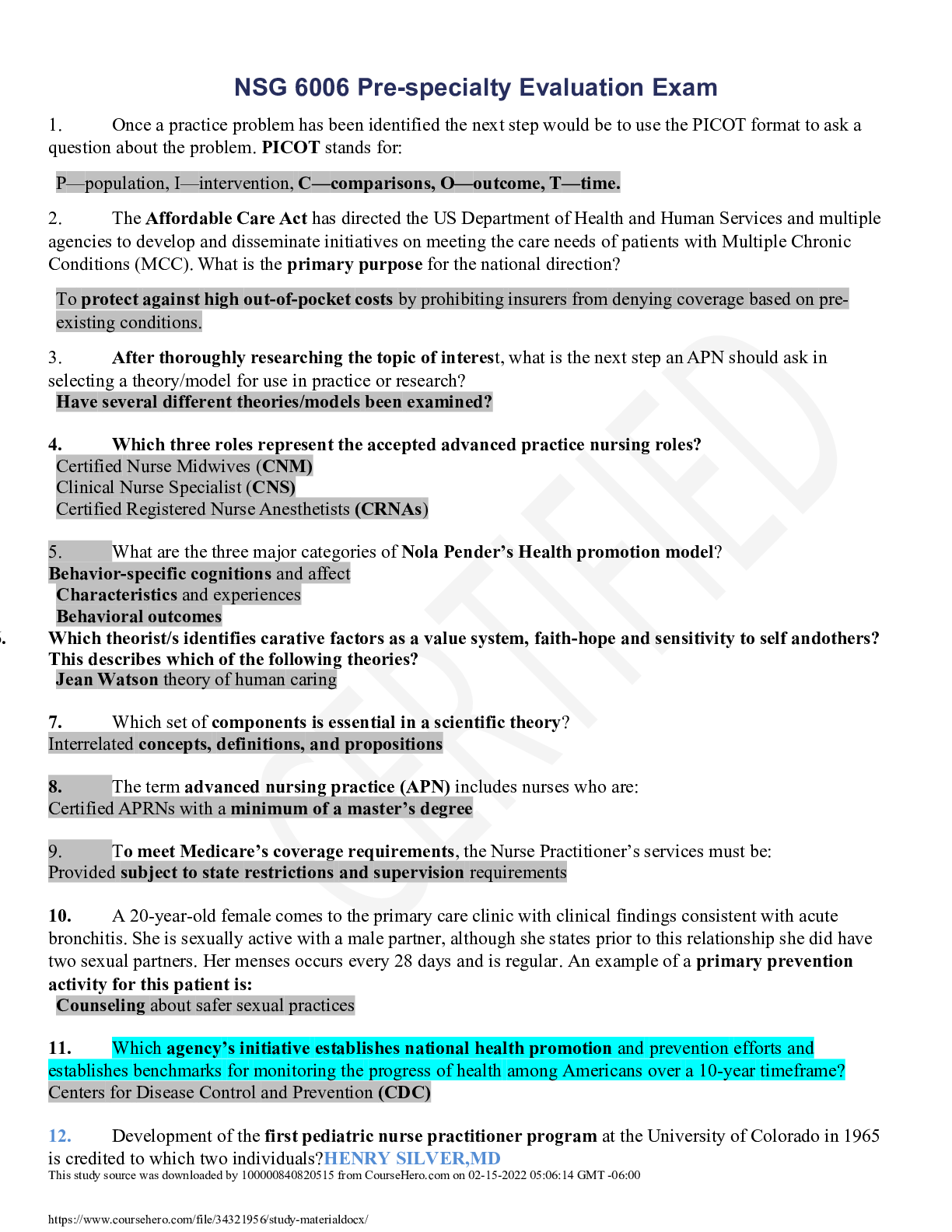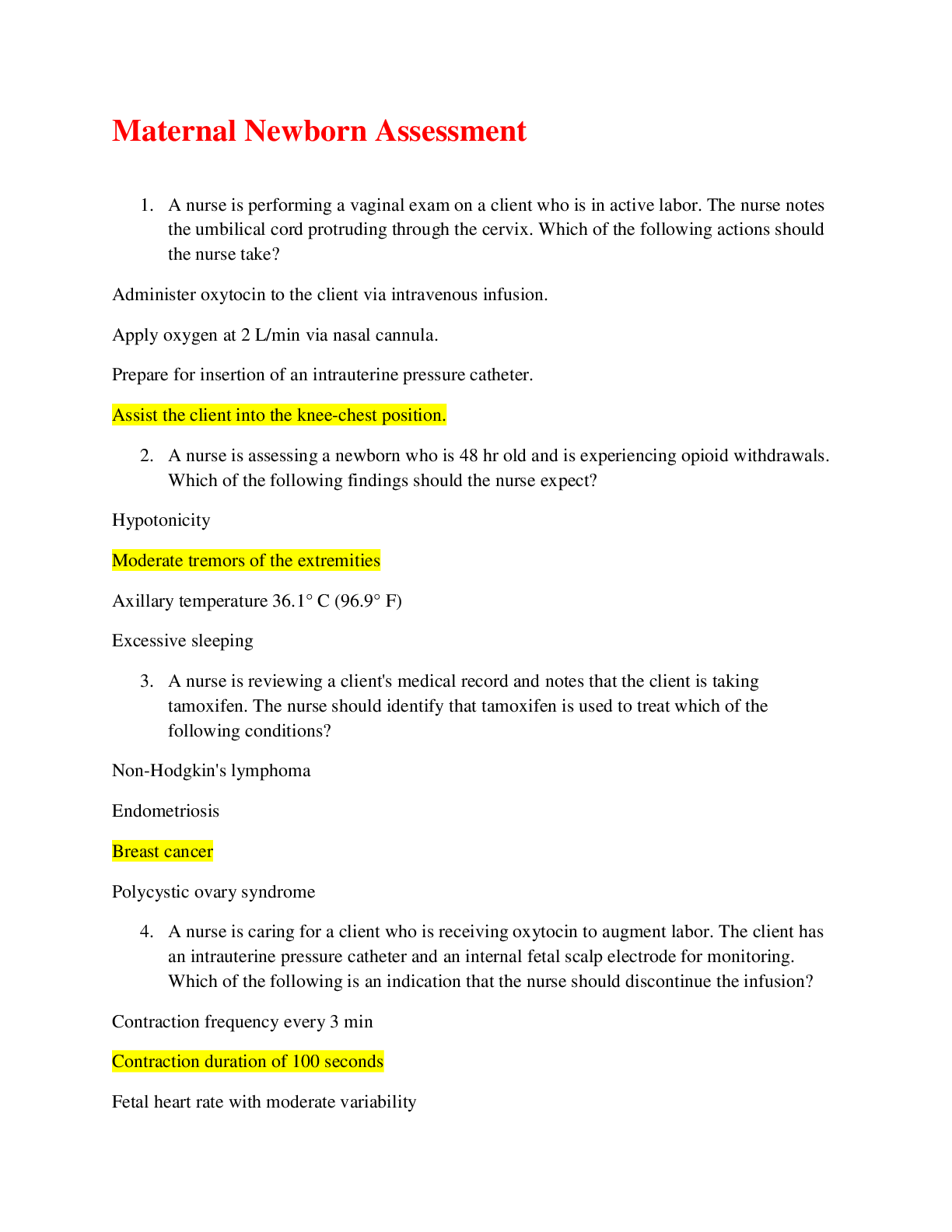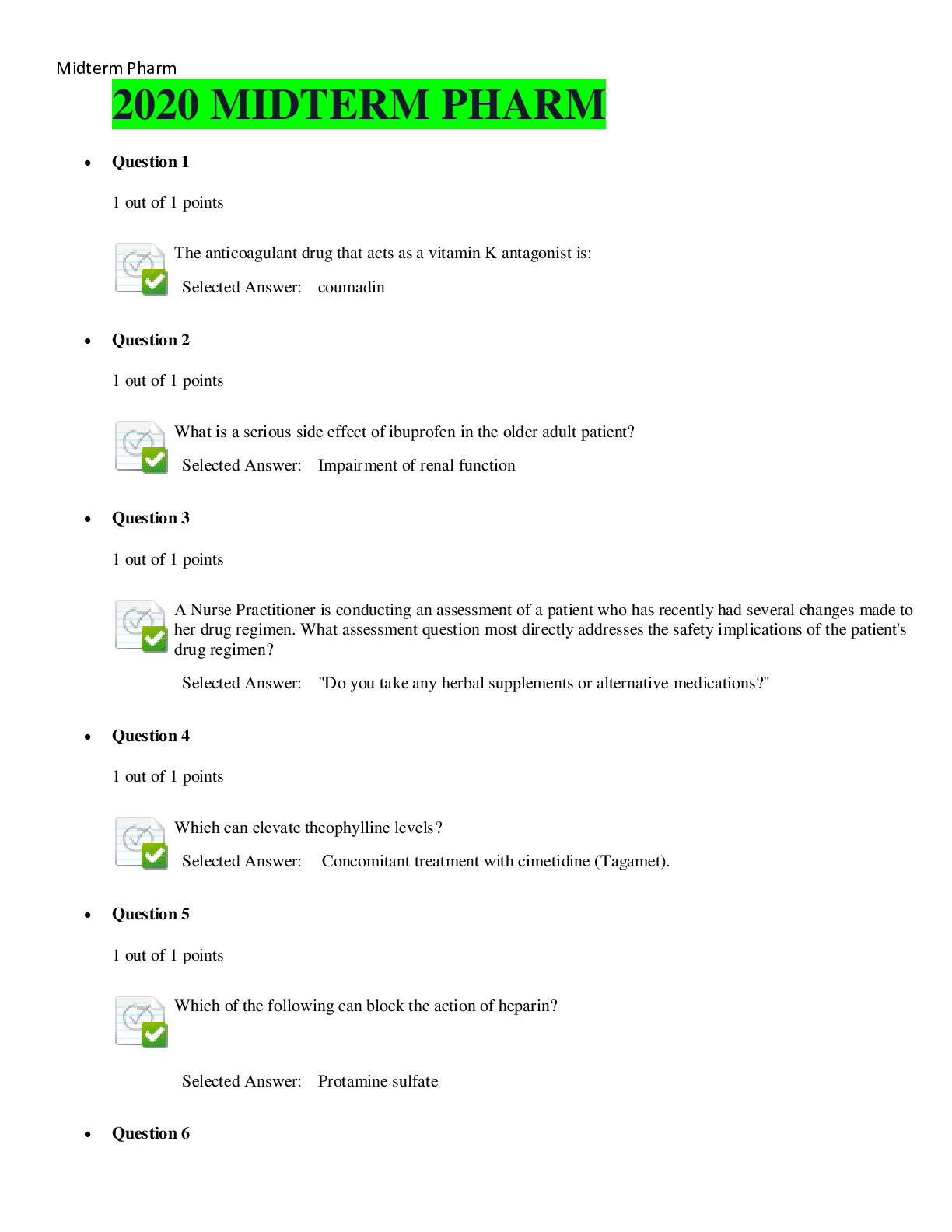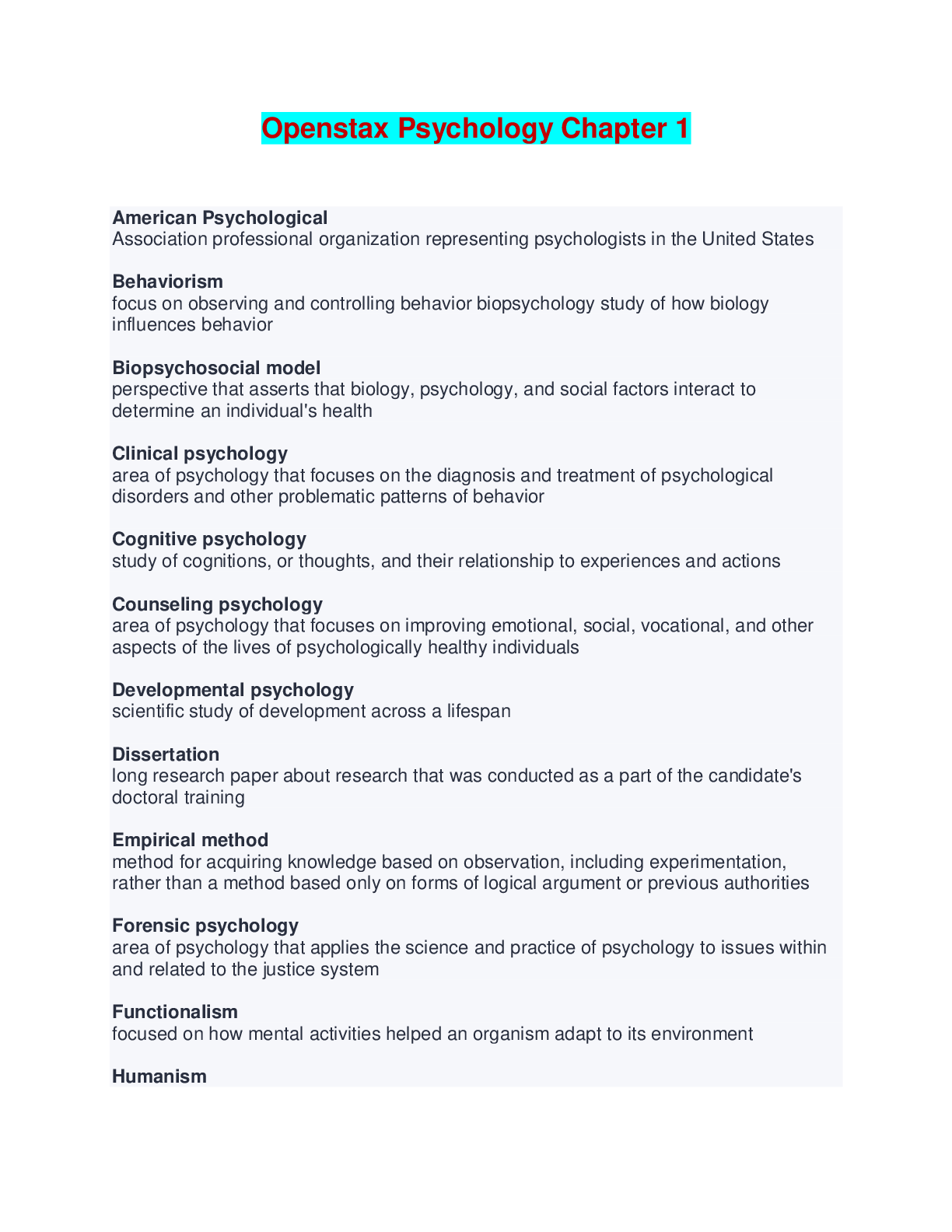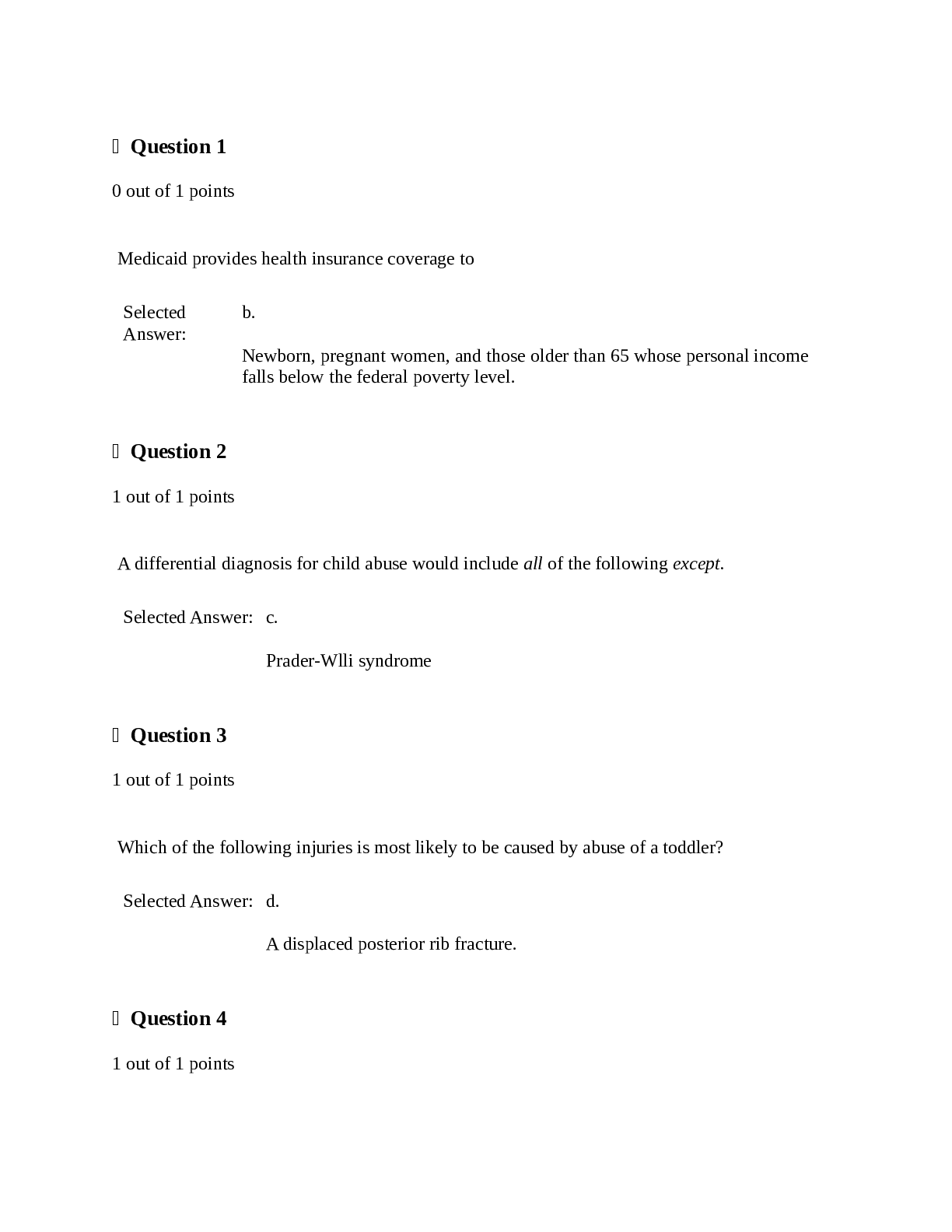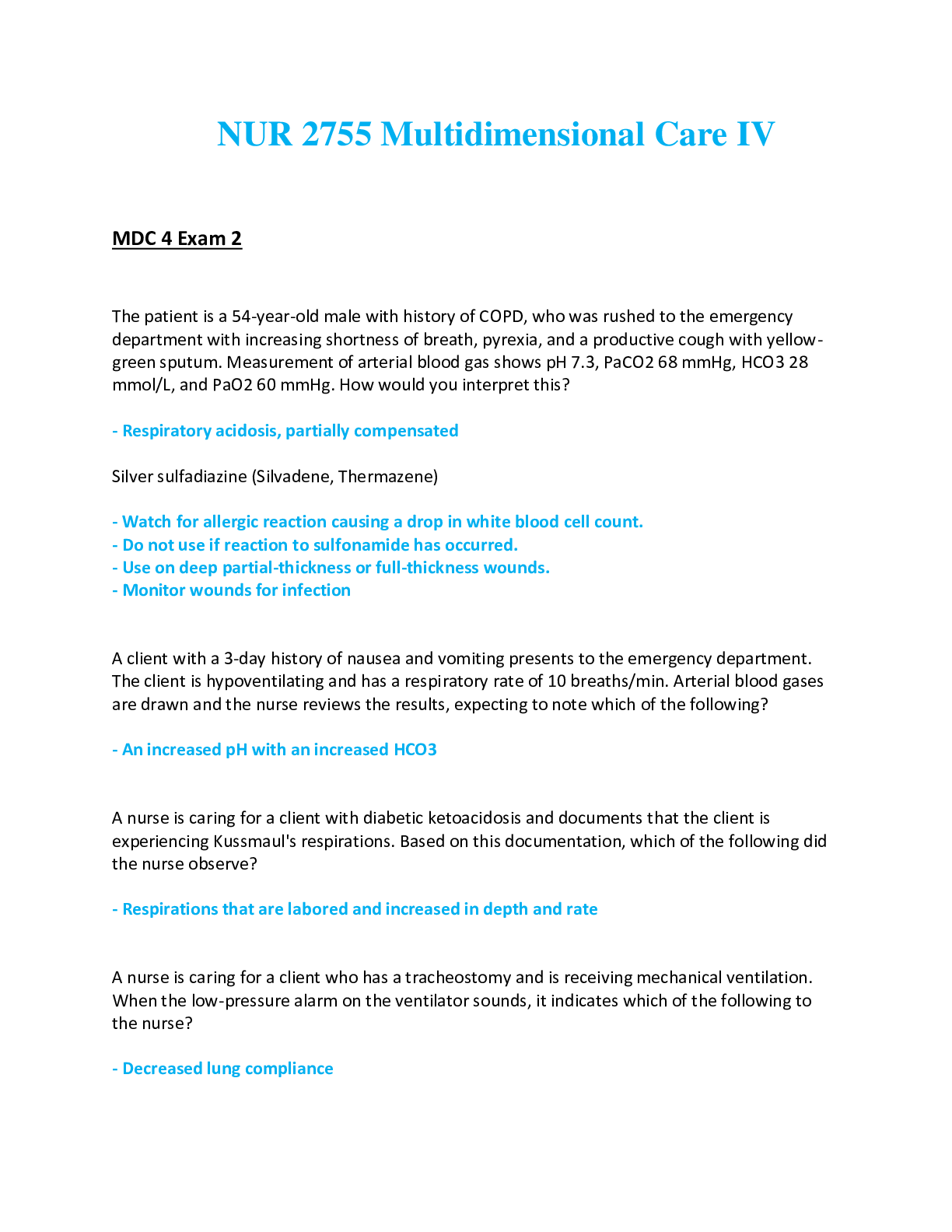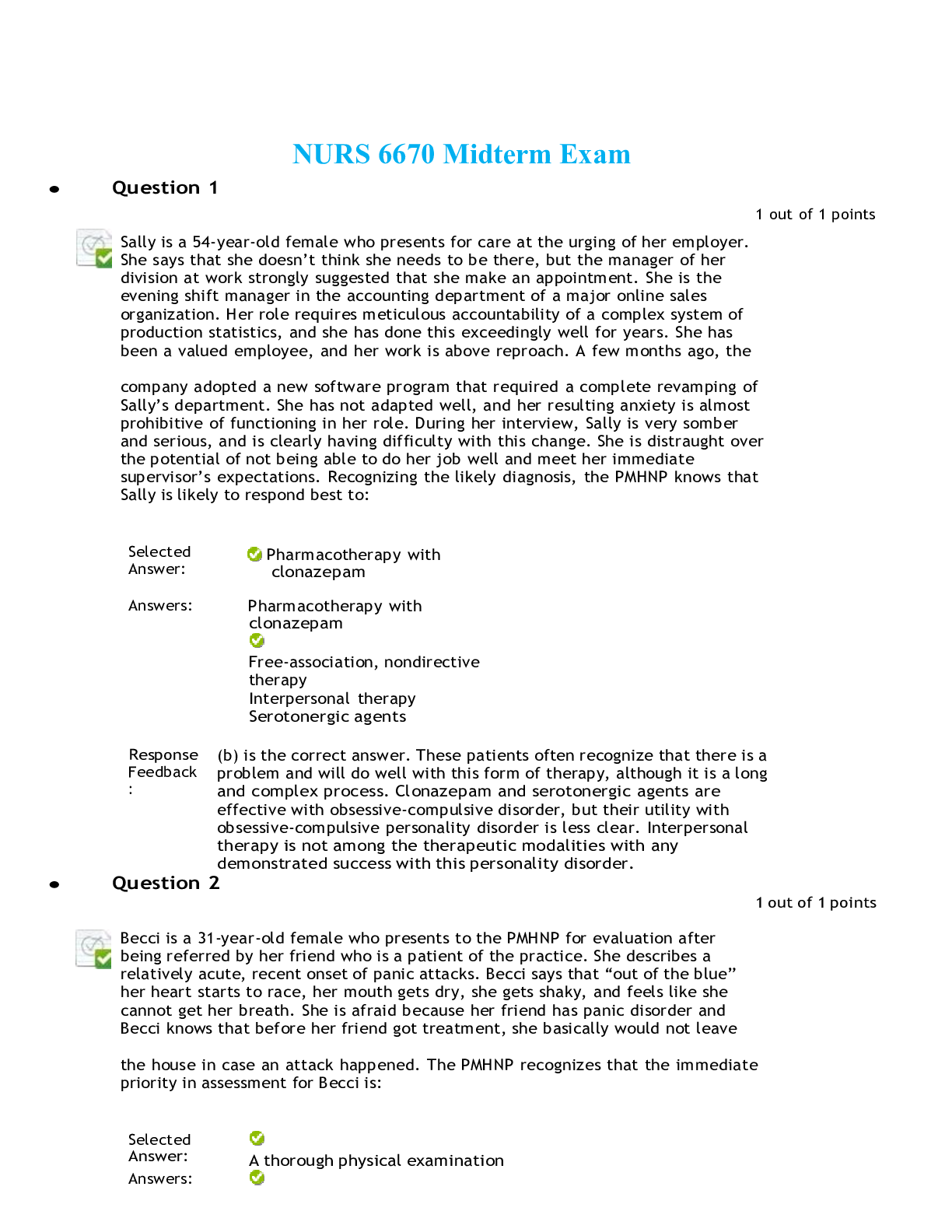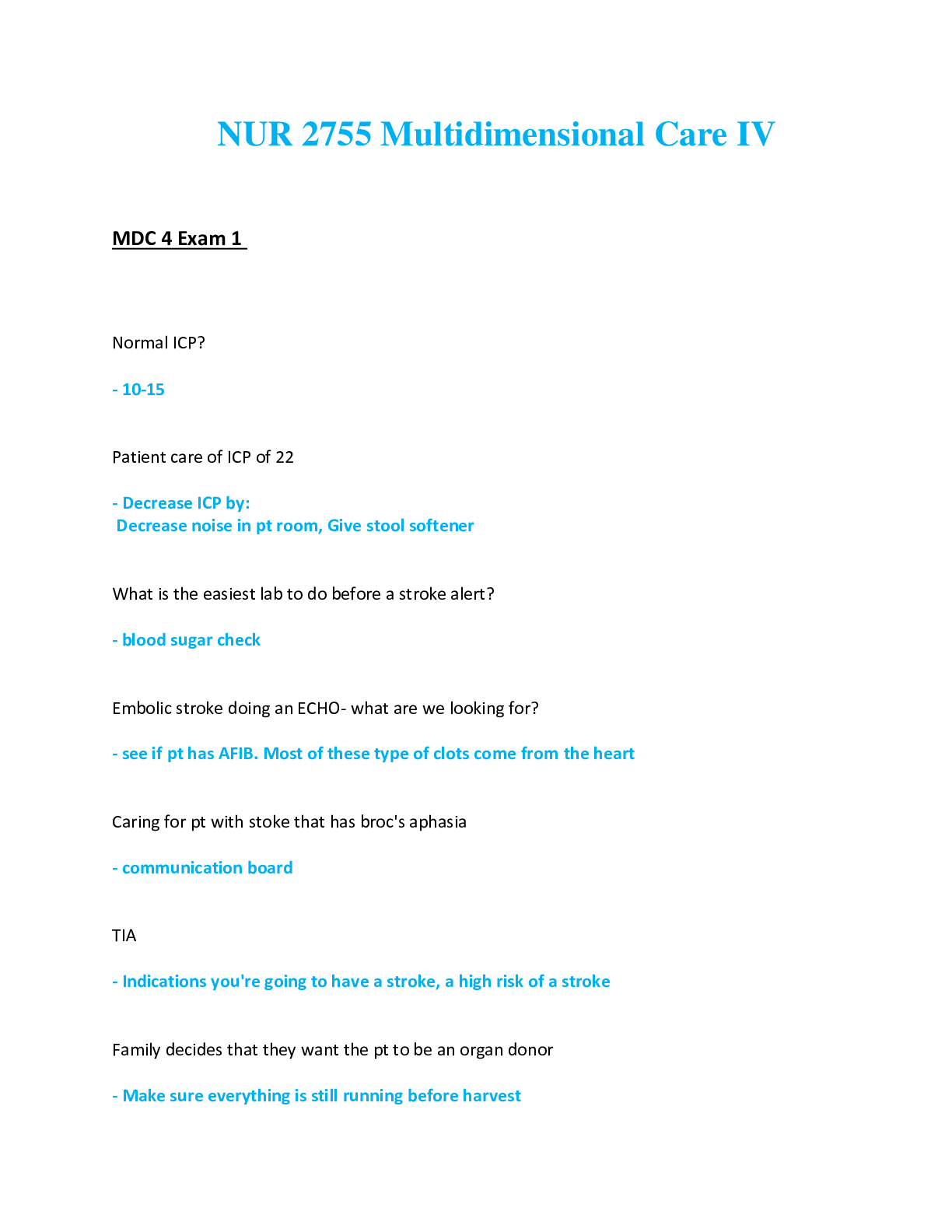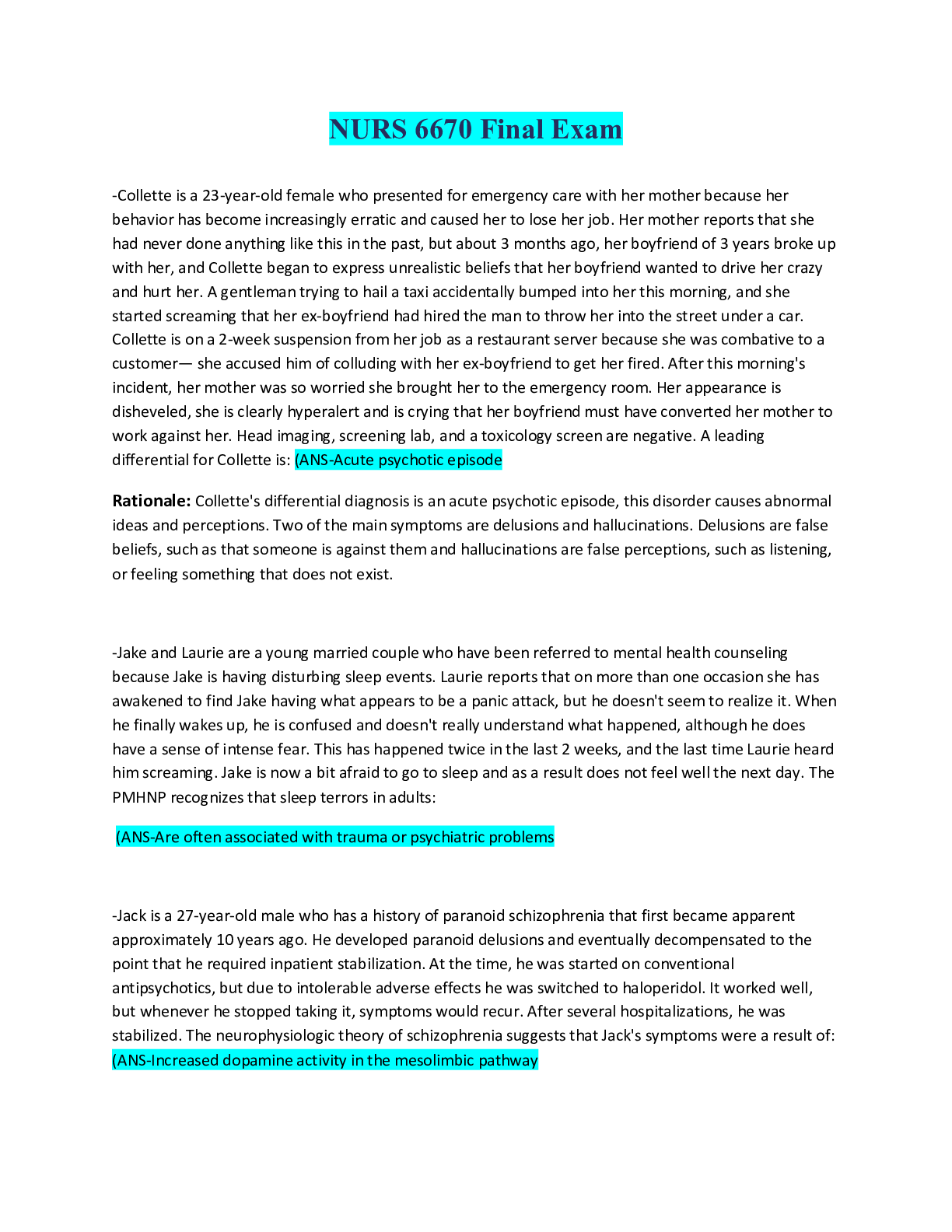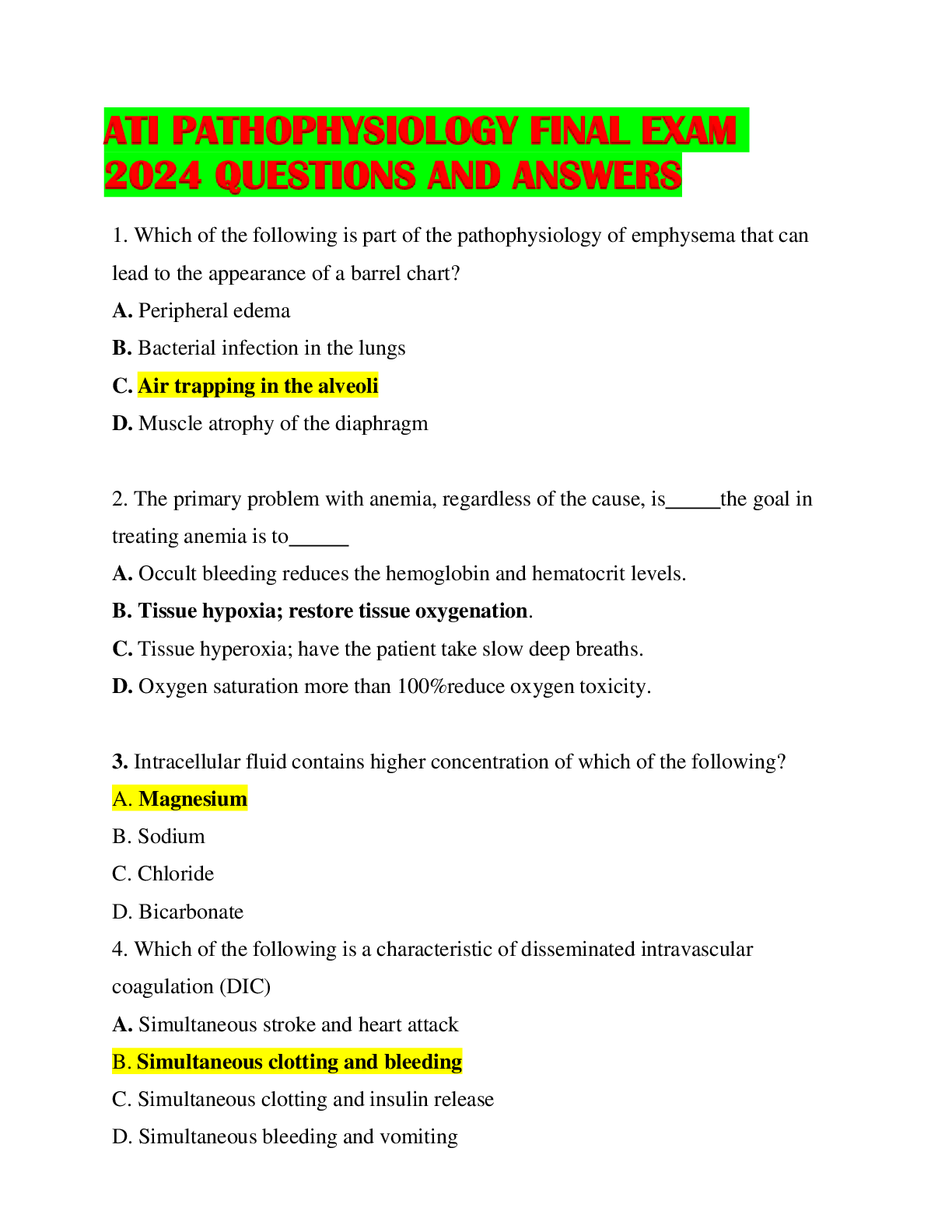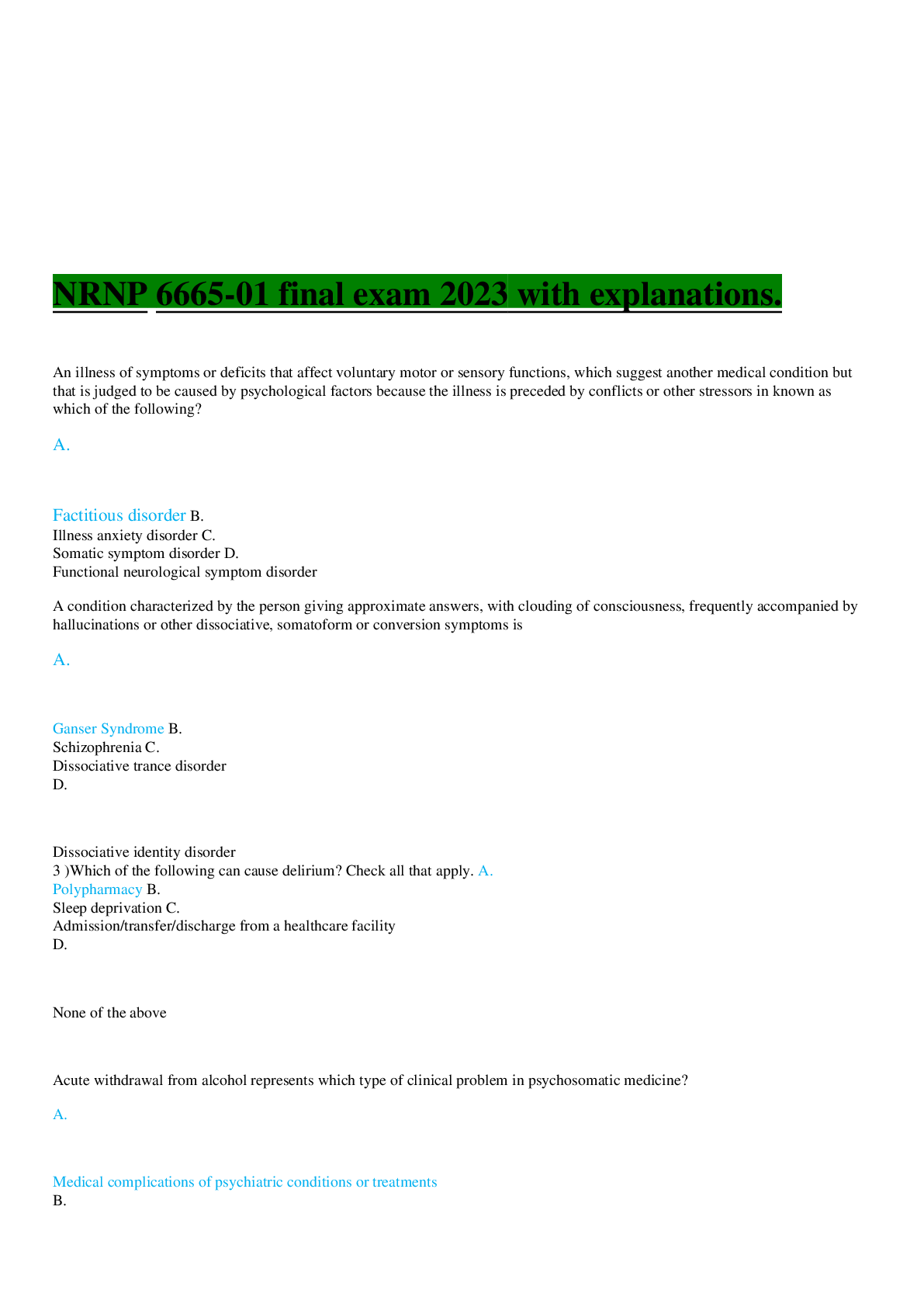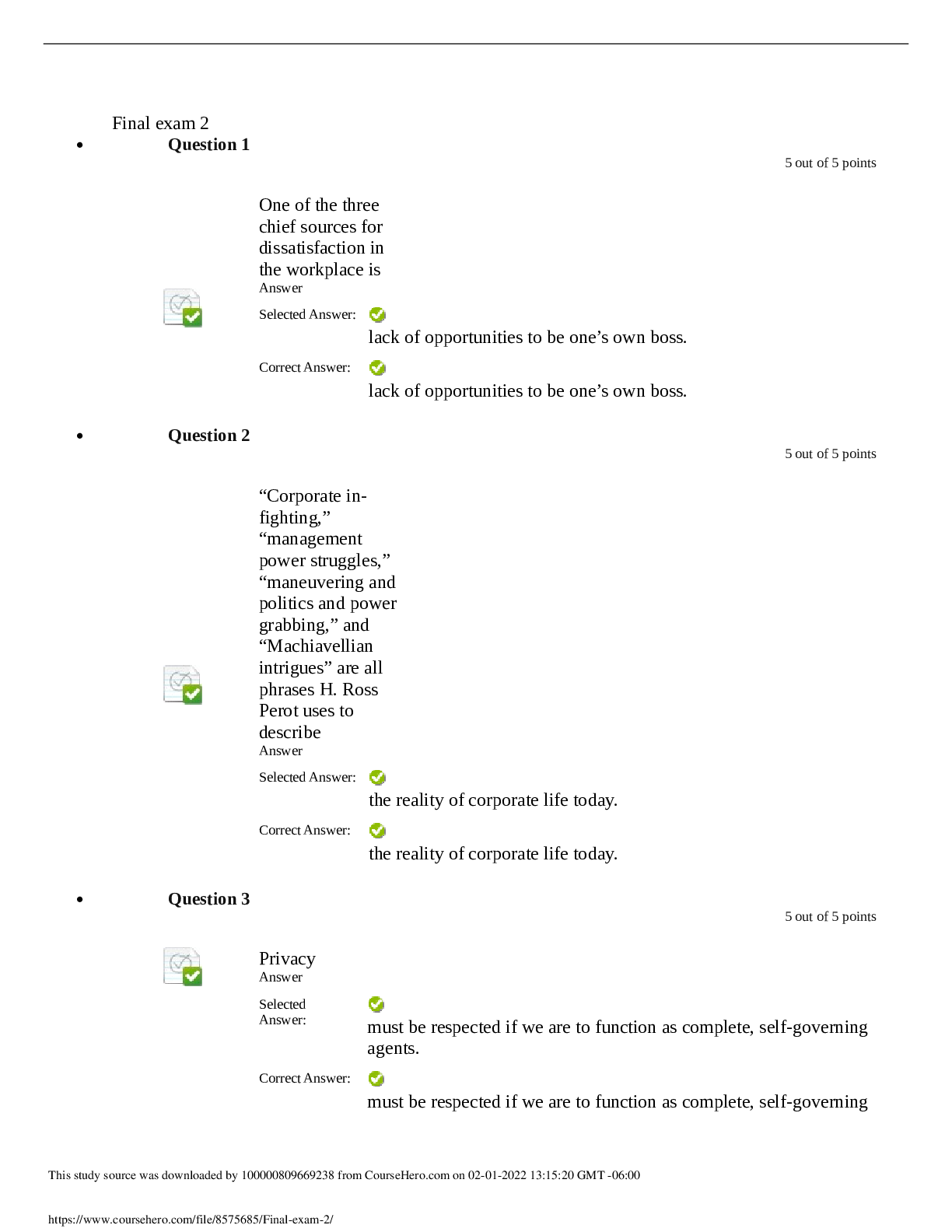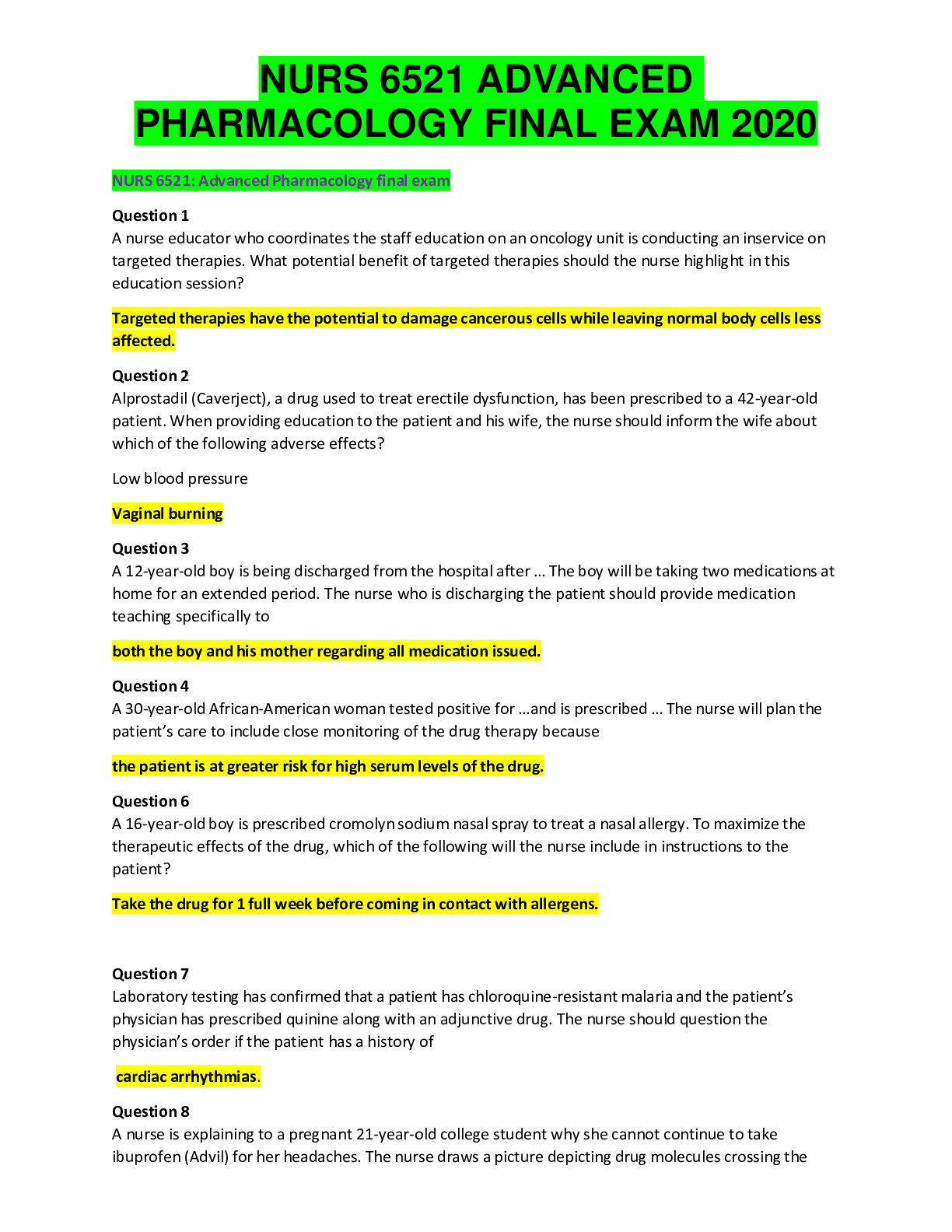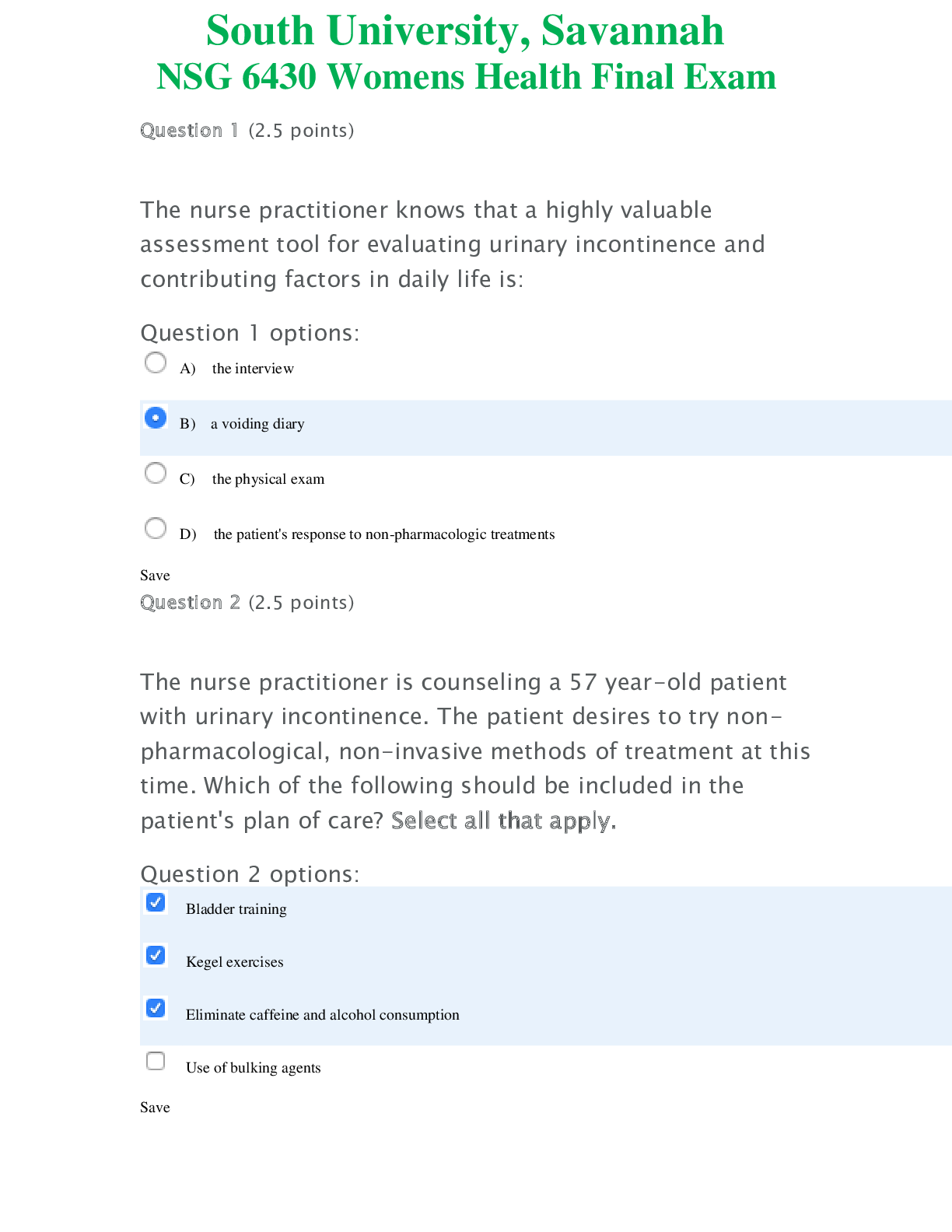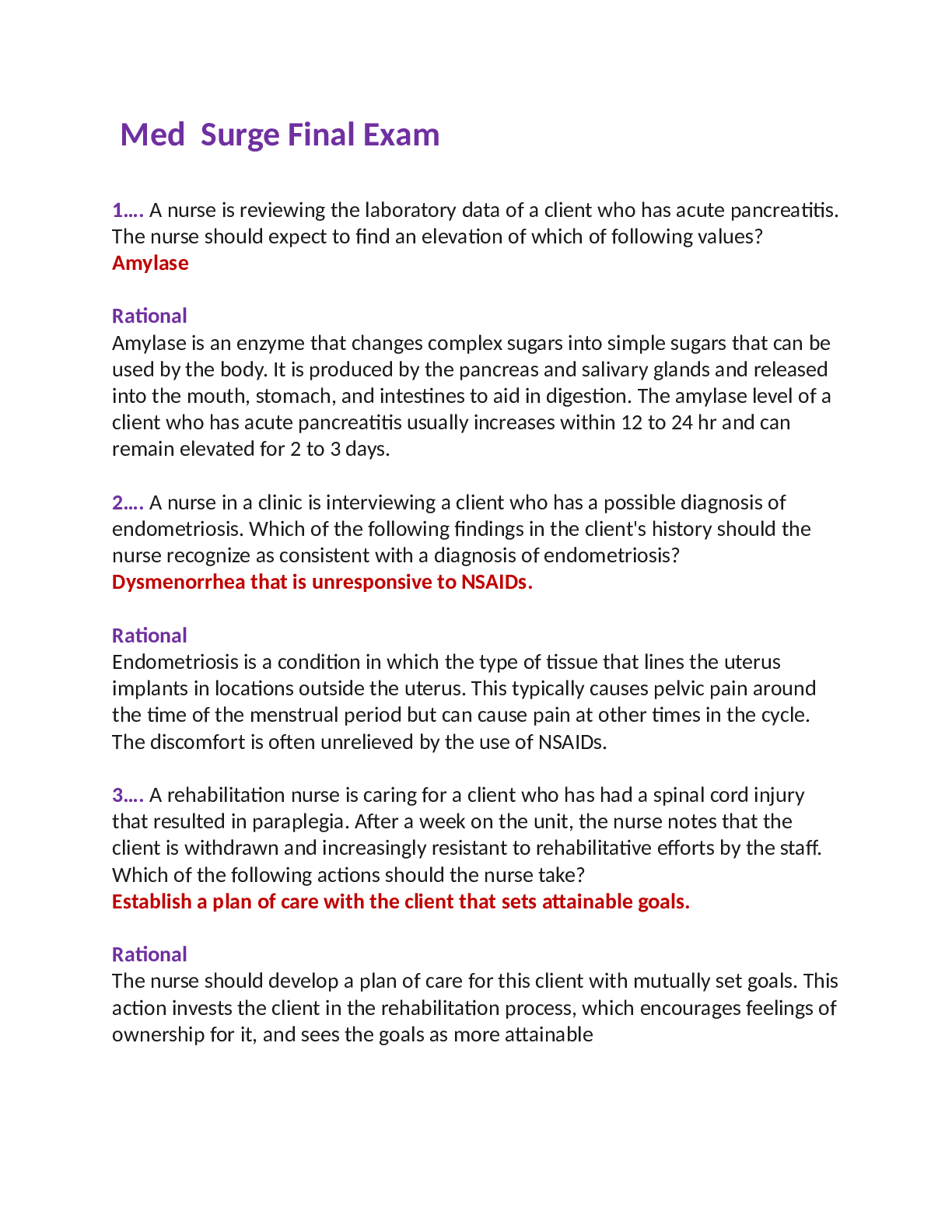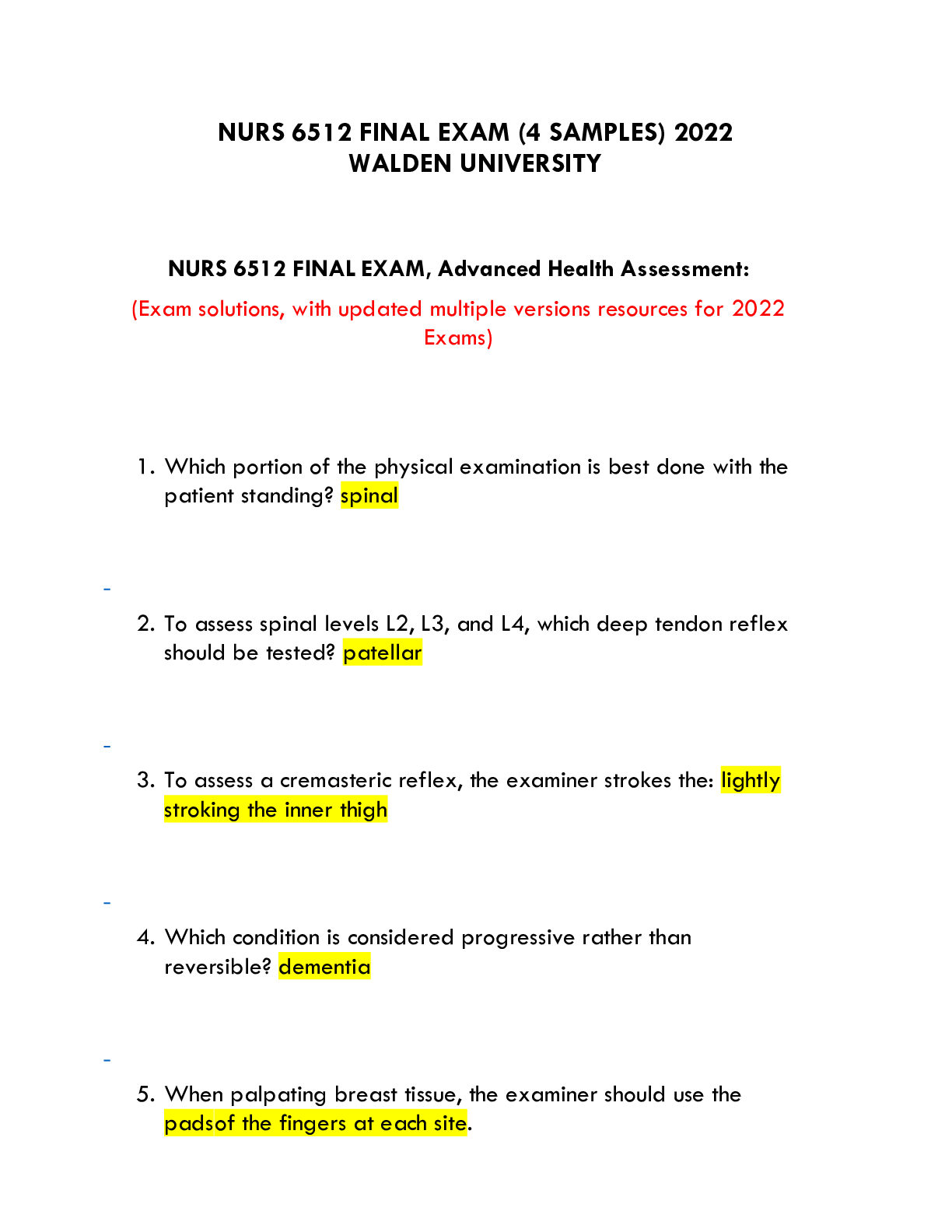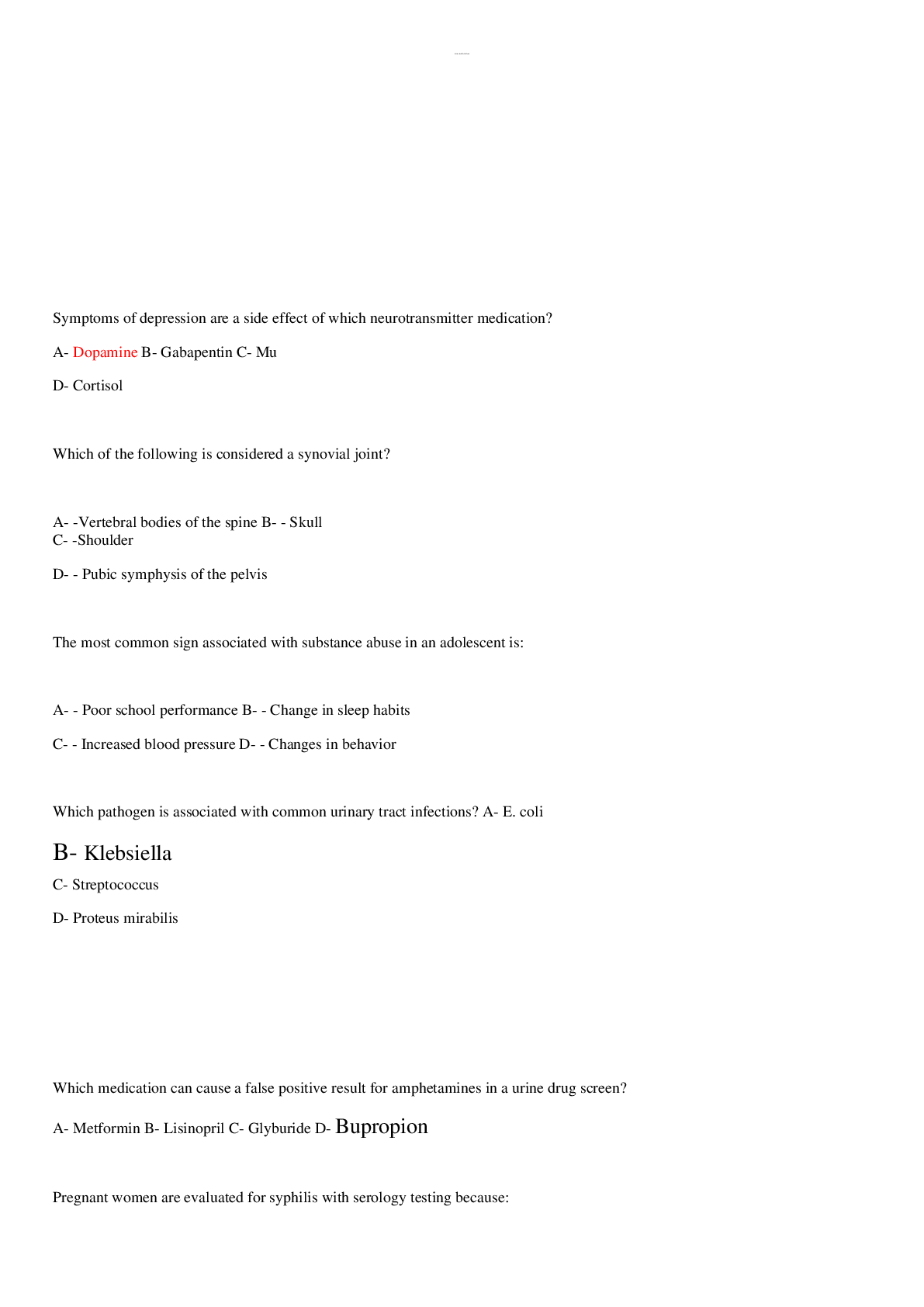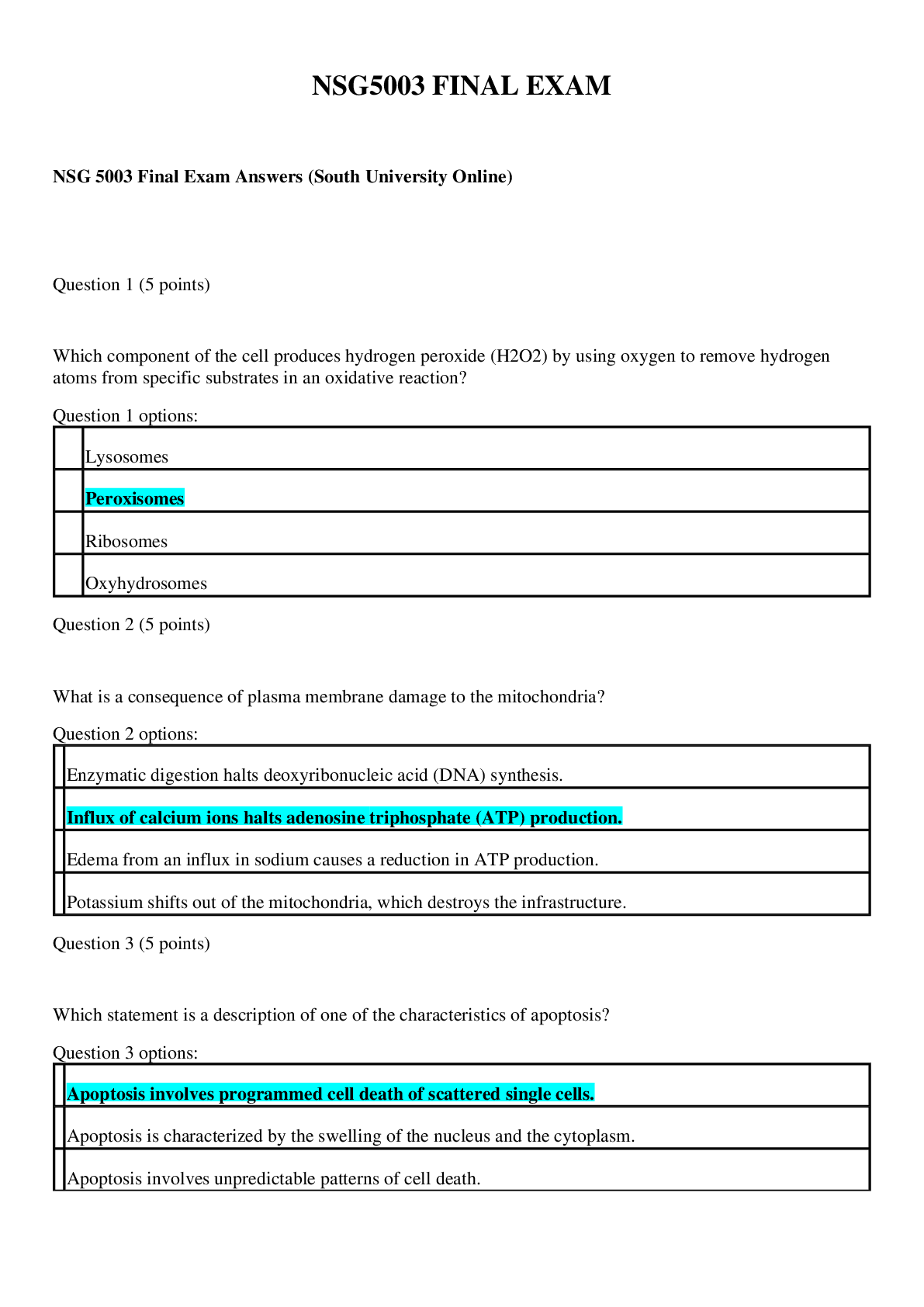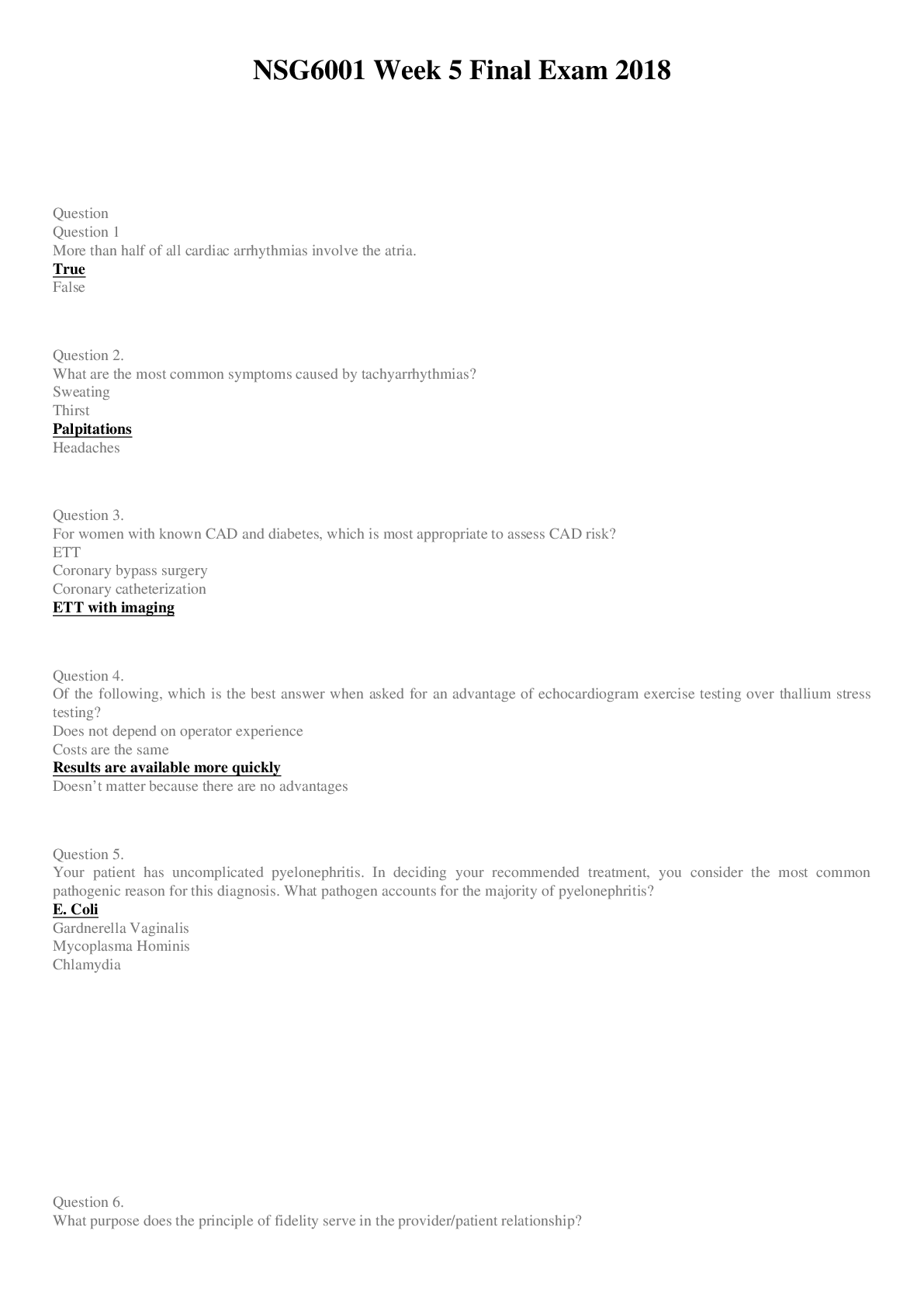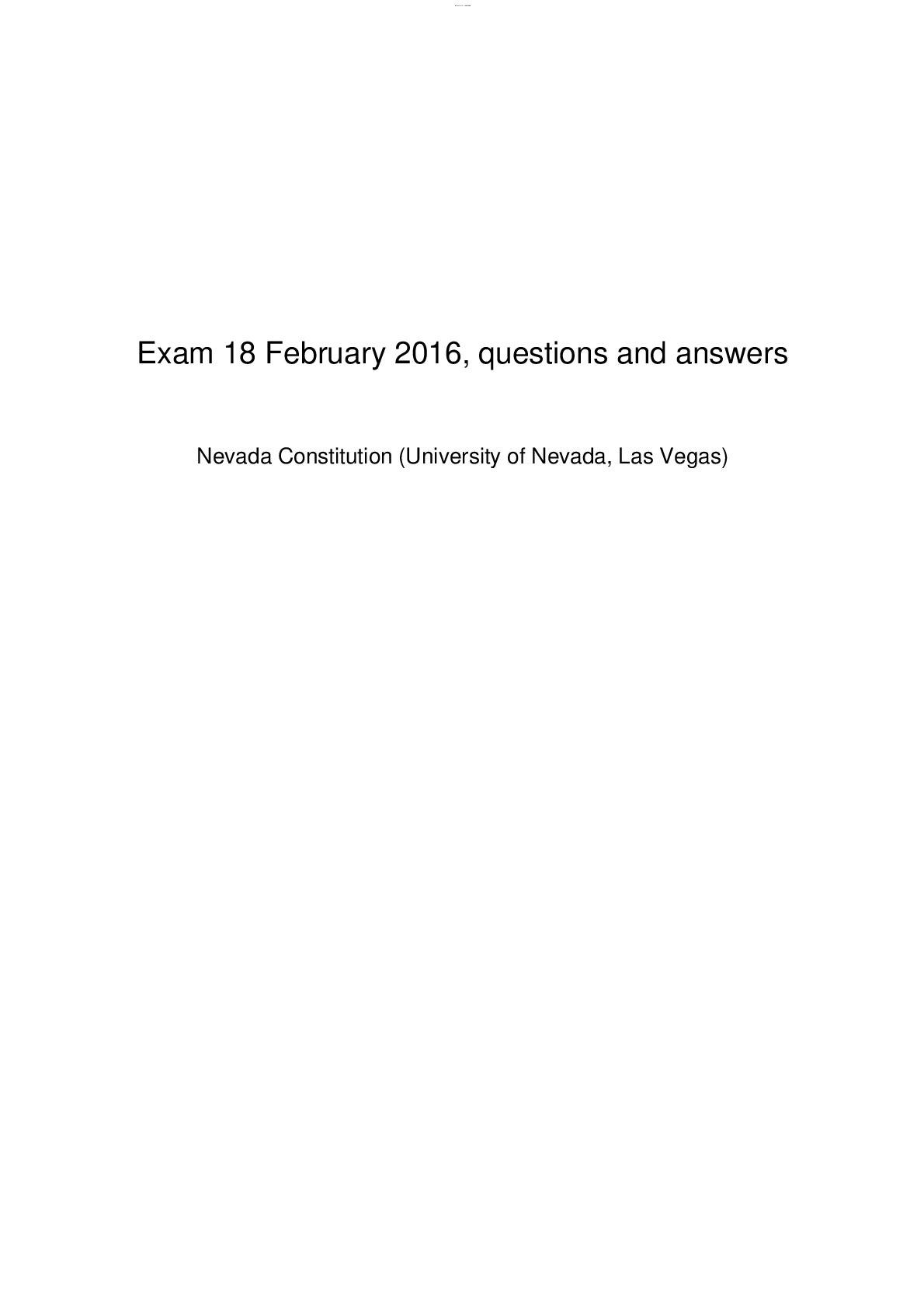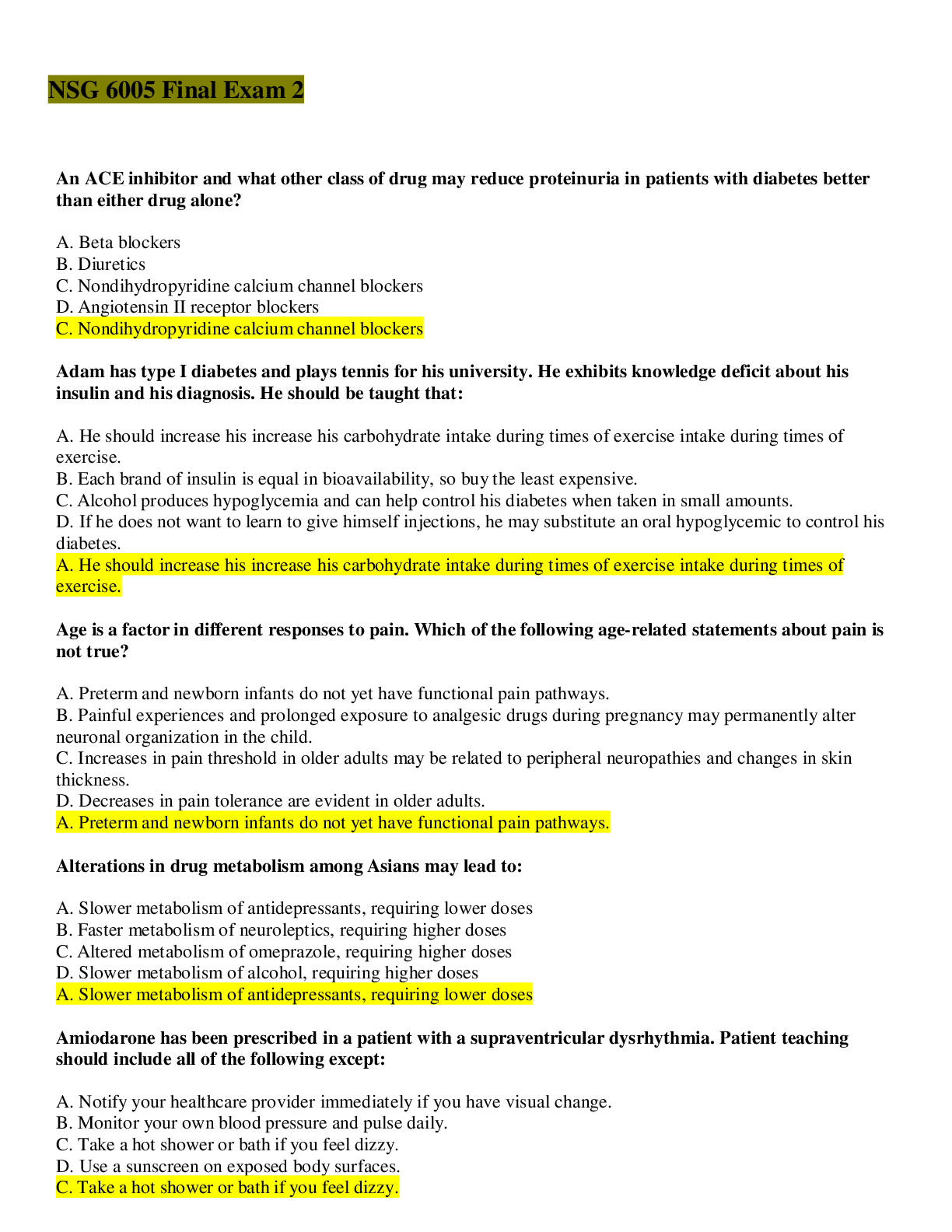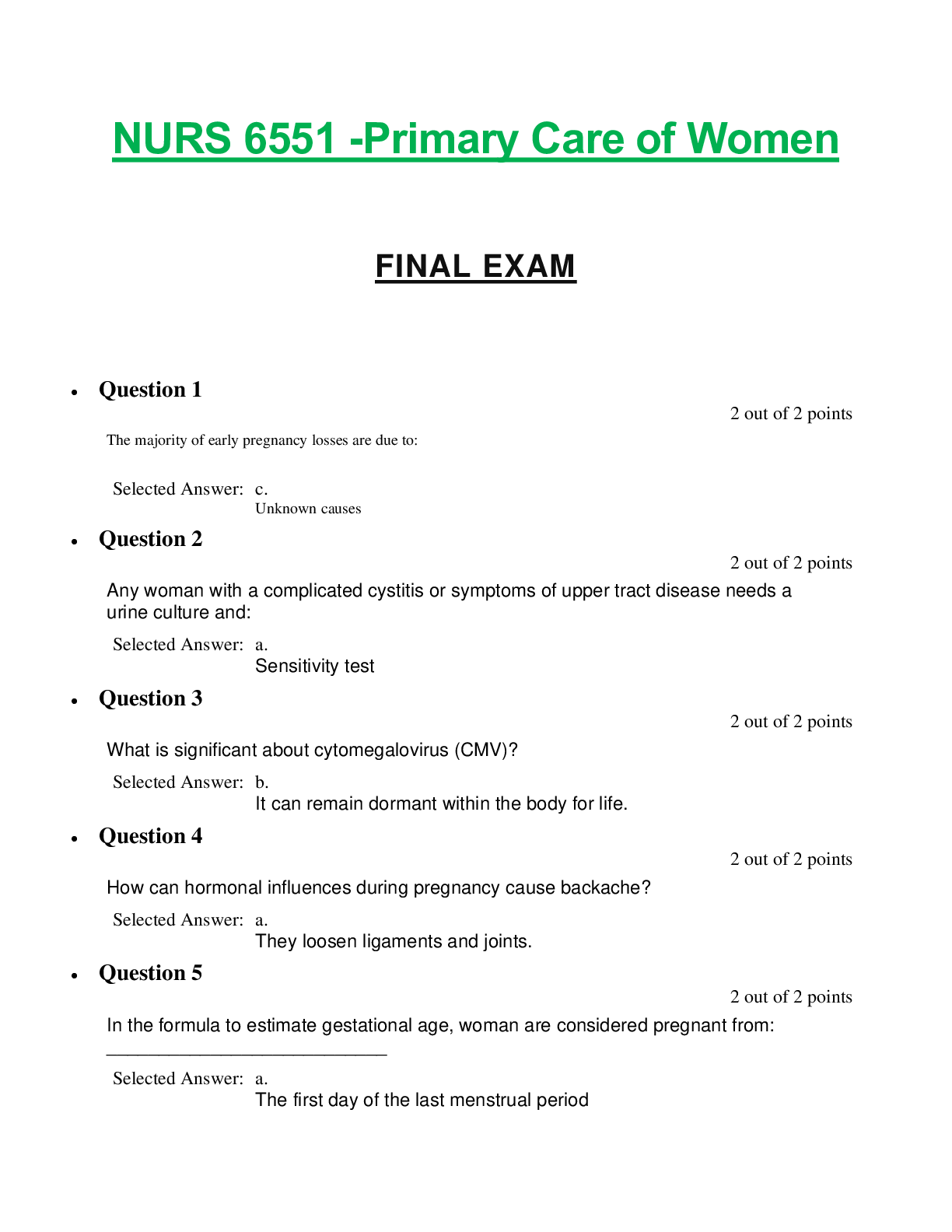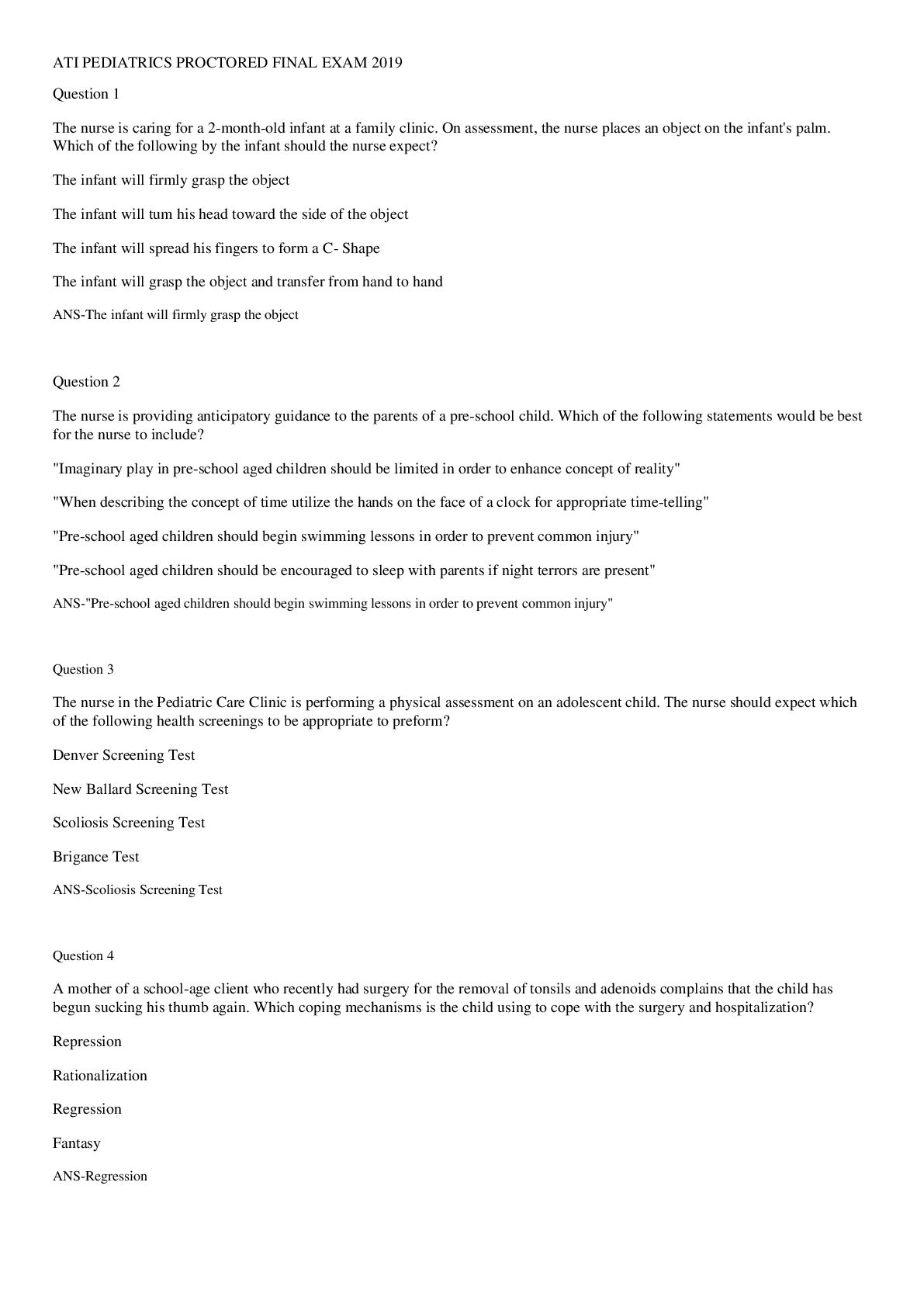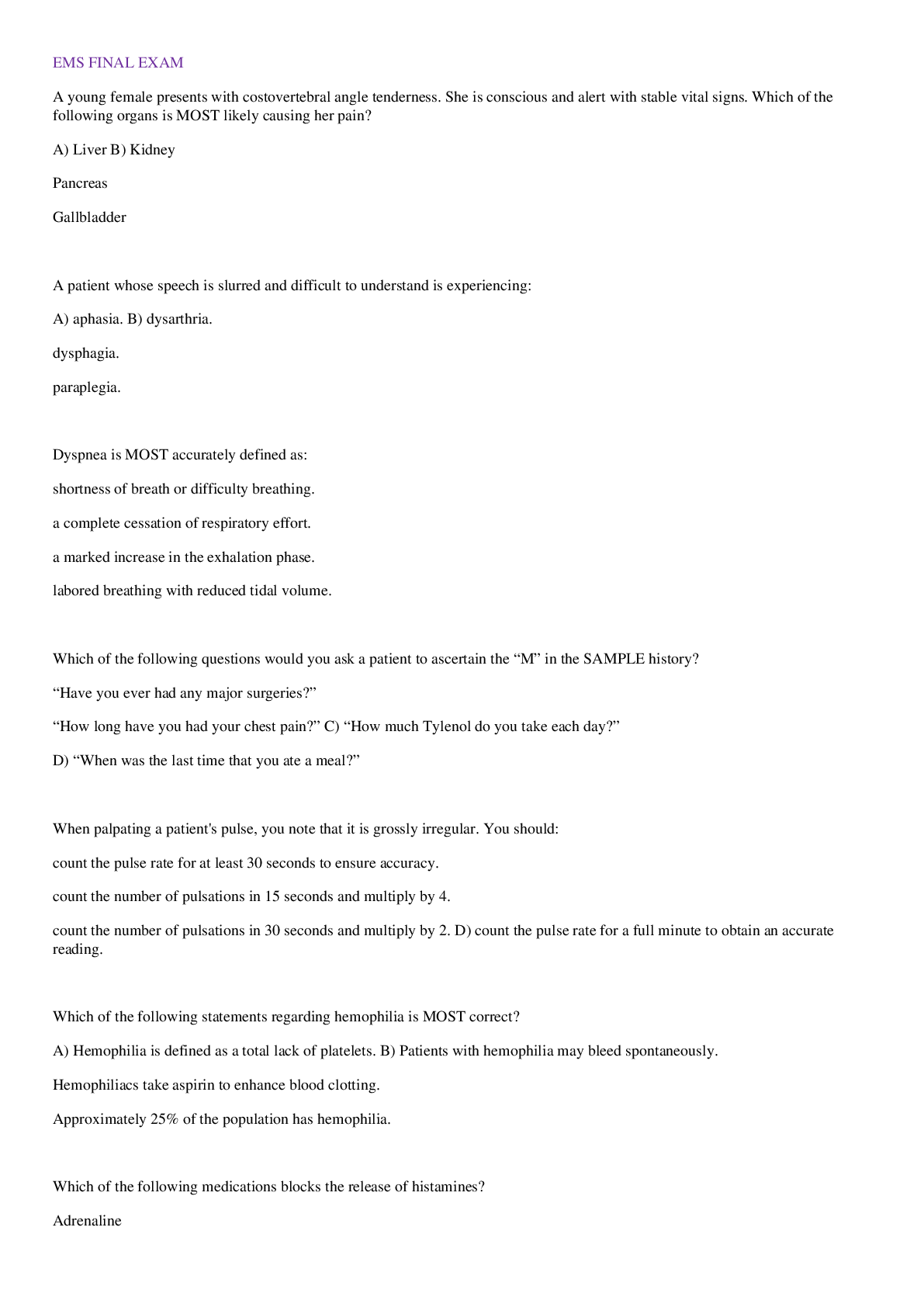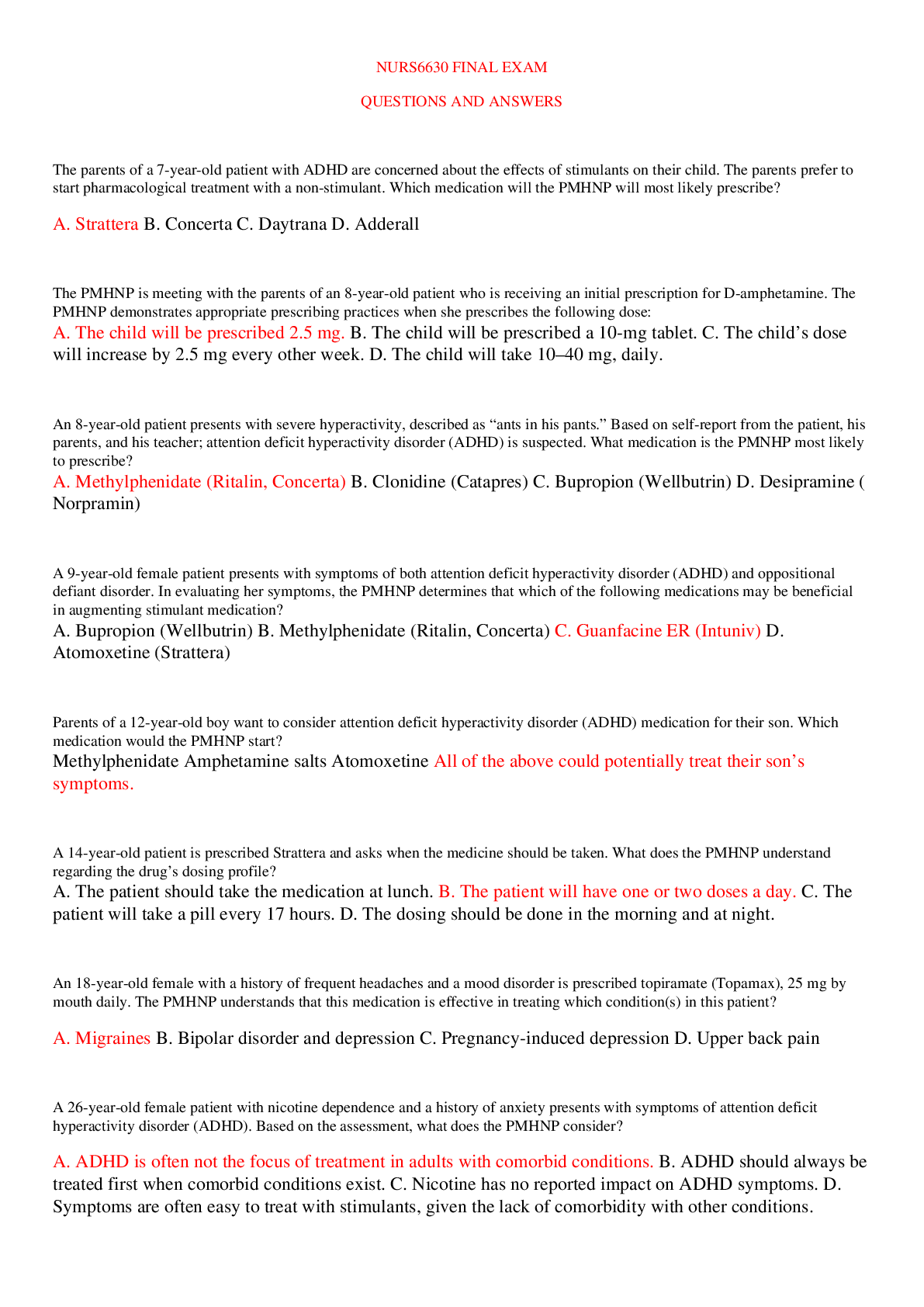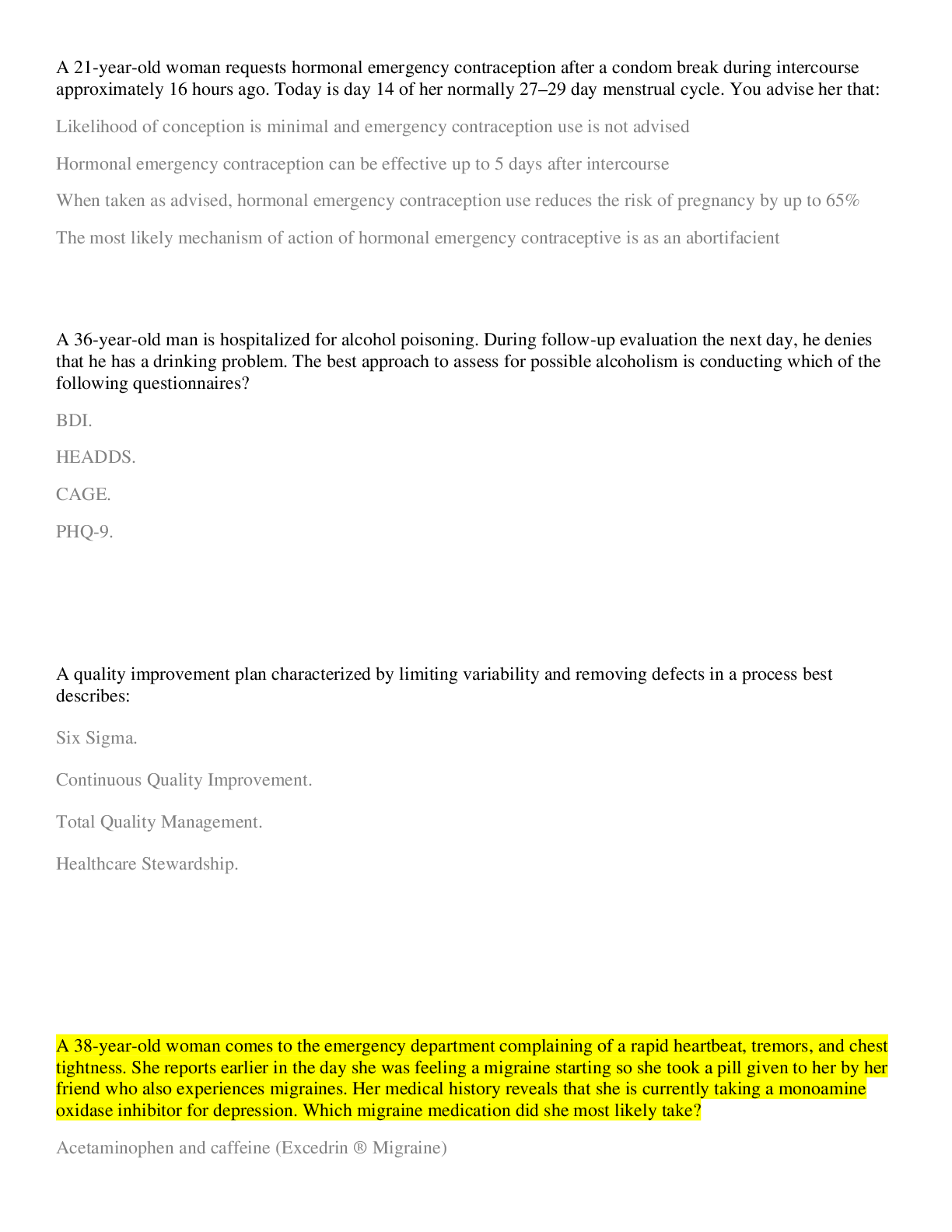NU 216 Adult Health One Final Exam 2
Document Content and Description Below
Unit 1 Visual • Eye accommodation – pupils will constrict when moving an object towards the nose • Light – pupils constrict • Dark – pupils dilate • Cataract development o Cataract... = opacity within the lens o Risk factors ▪ Age (senile cataracts) ▪ Blunt or penetrating trauma ▪ Maternal rubella ▪ Radiation or ultraviolet light exposure ▪ Ocular inflammation ▪ Medications – corticosteroids ▪ Medical history – Diabetes o Clinical manifestations ▪ Decrease in vision • Gradual ▪ Abnormal color perception ▪ Glare • May be significantly worse at night when the pupil dilates o Diagnosis ▪ Decreased visual acuity ▪ Visual dysfunction ▪ Ophthalmoscopy – opacity is directly observable o Nonsurgical Therapy ▪ Changing eyewear prescription – temporarily improve visual acuity ▪ Strong reading glasses/magnifiers – near vision ▪ Increase amount of light to read ▪ Lifestyle modification o Surgical Therapy ▪ Preoperative • History and physical examination • Outpatient surgical • Dilating drops o Mydriatic ▪ A-adrenergic agonist ▪ Contraction of iris dilator muscle o Cycloplegic ▪ Anticholinergic ▪ Blocks effect of acetylcholine on ciliary body muscles o WEAR DARK GLASSES TO MINIMIZE PHOTOPHOBIA • Nonsteroidal anti-inflammatory eye drop – reduce inflammation ▪ Intraoperative • Phacoemulsification – small incision is made in the surface of the eye in or near the cornea, ultrasonic vibrations dissolve the clouded lens, particles are suctioned out • Extracapsular cataract extraction procedure – cataract is removed in one piece o Advanced cataracts when lens is too dense • IOL lens – posterior chamber lens implanted in capsular bag behind iris ▪ Postoperative • Antibiotic drops – prevent infection • Corticosteroid drops – decrease postoperative inflammatory response • Activity restrictions – bending, stooping, coughing, lifting o Health Promotion ▪ Wear sunglasses ▪ Avoid extraneous or unnecessary radiation ▪ Maintain appropriate intake of antioxidant vitamins – C and E • Macular degeneration development o Most common cause of irreversible central vision loss o 2 forms ▪ Dry (nonexudative) • Most common • Close vision tasks difficult • Macular cells atrophy – slowly progressive and painless vision loss • Abnormal accumulation of yellowish extracellular deposits (drusen) in retinal pigment epithelium • Acute vision loss ▪ Wet (exudative) • More severe • Accounts for AMD-related blindness • More rapid onset of vision loss • Development of abnormal blood vessels in or near macula o May leak fluid and bleed – scar tissue • Acute vision loss o Risk factors ▪ Retinal aging ▪ Genetics and family history ▪ White ethnicity ▪ Chronic inflammation conditions ▪ Smoking ▪ Hypertension o Reduce risk ▪ Increase intake of dark green, leafy vegetables with lutein (kale/spinach) ▪ Vitamin and mineral supplements ▪ Smoking cessation o Clinical manifestations ▪ Blurred and darkened vision ▪ Scotomas – blind spots in visual field ▪ Metamorphopsia – distortion of vision o Interprofessional Care ▪ Limited treatment options – wet AMD • Medications injected into vitreous cavity to help slow vision loss o Side effects ▪ Blurred vision ▪ Eye irritation ▪ Eye pain ▪ Photosensitivity o Given at 4- or 6-week intervals • Photodynamic therapy – damages abnormal blood vessels o Avoid direct exposure to sunlight and other intense forms of light for 5 days after treatment Pressure Injuries and Wound Care • Pressure Injury o Localized injury to skin and/or underlying tissue o Result of pressure with or without shear o Development factors ▪ Amount of pressure (intensity) ▪ Length of time the pressure is exerted (duration) ▪ Ability of patient’s tissue to tolerate the pressure ▪ Shearing force – pressure on skin when it adheres to bed and skin layers slide in direction of body movement ▪ Excessive moisture o Risk factors ▪ Increased age ▪ Incontinent ▪ Unable to reposition ▪ Bed- or wheelchair-bound • Staging o Stage 1 ▪ Intact skin with nonblanchable redness ▪ Usually over a bony prominence ▪ Area may be painful, firm, soft, warmer/cooler compared to adjacent tissue o Stage 2: Partial Thickness ▪ Shallow open ulcer with red-pink wound bed – no slough ▪ Intact/open/ruptured serum-filled or serosanguineous-filled blister ▪ Shiny or dry shallow ulcer without slough or bruising o Stage 3: Full-Thickness Skin Loss ▪ Subcutaneous fat may be visible – no bone/tendon/muscle ▪ Slough, undermining, tunneling may be present o Stage 4: Full-Thickness Tissue Loss ▪ Exposed bone/tendon/muscle ▪ Slough, eschar, undermining, tunneling may be present o Unstageable ▪ Full-thickness tissue loss ▪ Depth is obscured by slough/eschar o Suspected Deep Tissue Injury ▪ Purple/maroon localized area intact skin ▪ Blood-filled blister ▪ Due to damage of underlying soft tissue from pressure and/or shear • Undermining o Tissue under the wound edges becomes eroded, results in a pocket beneath the skin at the wound’s edge • Slough o Consequence of inflammatory phase of wound healing o Comprises dead white blood cells, fibrin, cellular debris, and liquefied devitalized tissue • Tunneling o Wound channels that extend from a wound into and through subcutaneous tissue/muscle • Eschar o Slough/piece of dead tissue that is cast off from the surface of the skin • Maceration o Softening and breakdown of skin from prolonged exposure to moisture • Dehiscence o Separation and disruption of previously joined wound edges • Evisceration o Wound edges separate to the extent that intestines protrude through wound • Wound healing o Primary intention – wound margins neatly approximated ▪ 3 phases • Initial – 3 to 5 days o Edges of incision are aligned and sutured/stapled in place o Incision area fills with blood from cut blood vessels, blood clots form, platelets release growth factors o Acute inflammatory reaction occurs • Granulation phase – 5 days to 4 weeks o Proliferating fibroblasts, proliferating capillary sprouts (angioblasts), WBCs, exudate, loose/semifluid/ground substance o Wound is pink and vascular, at risk for dehiscence • Maturation and Scar Contractions – 7 days to several months o Secondary intention ▪ Wounds that have edges that cannot be approximated ▪ Debris may have to be cleaned away before healing can take place ▪ Greater defect and gaping wound edges ▪ Healing and granulation take place from edges inward and from bottom upward until defect is filled ▪ More granulation tissue and larger resulting scar o Tertiary Intention ▪ Delayed suturing of a wound ▪ Two layers of granulation tissue are sutured together ▪ Contaminated wound is left open and sutured closed after infection is controlled ▪ Primary wound becomes infected, opens, granulates, sutured ▪ Results in larger/deeper scar • Impediments to wound healing o Malnourished o Lack of protein – decreases supply of amino acids for tissue repair, albumin o Diabetics – decreases collagen synthesis, delays capillary growth, impairs phagocytosis, reduces supply of oxygen and nutrients secondary to vascular disease ........................................CONTINUED...................................... [Show More]
Last updated: 1 year ago
Preview 1 out of 14 pages
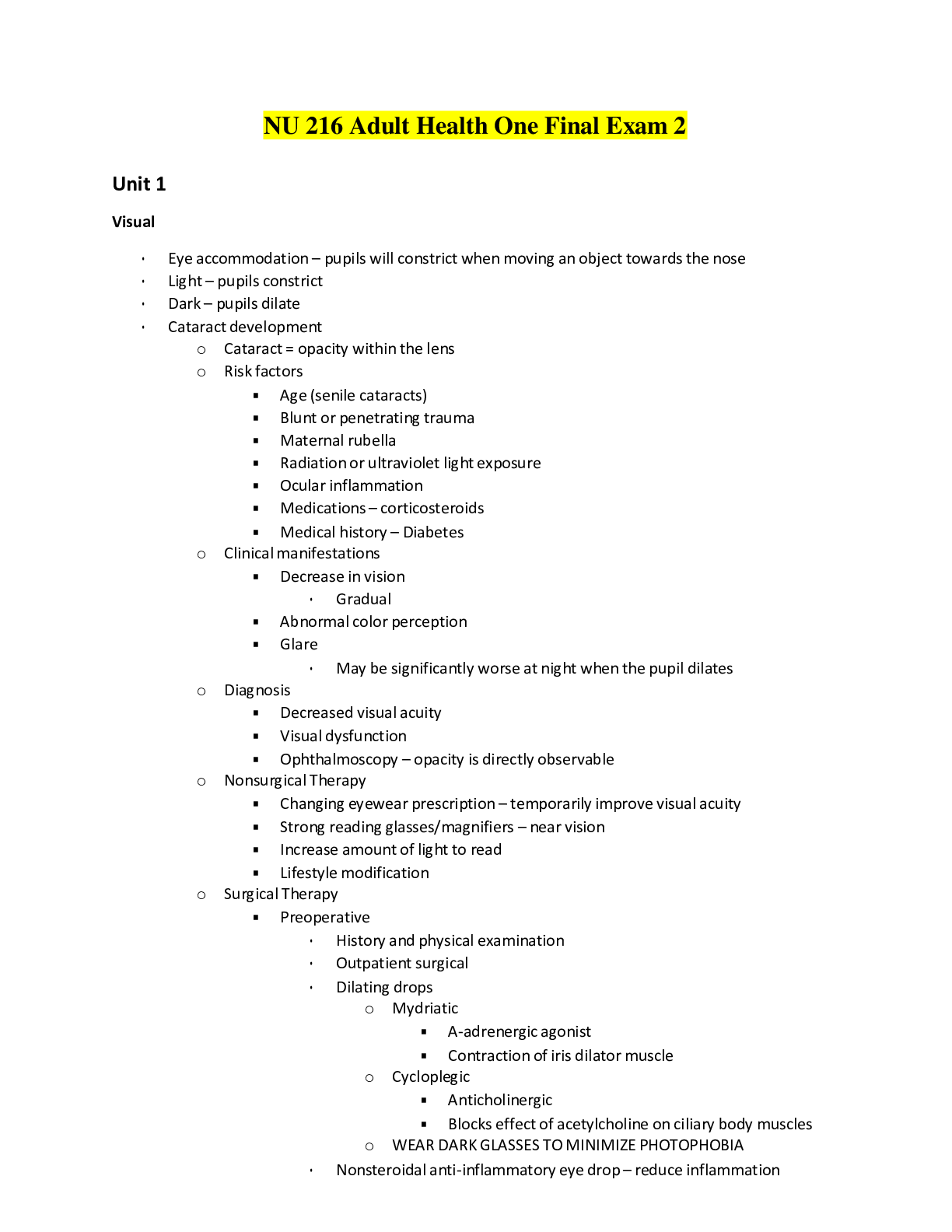
Reviews( 0 )
Document information
Connected school, study & course
About the document
Uploaded On
Jun 12, 2021
Number of pages
14
Written in
Additional information
This document has been written for:
Uploaded
Jun 12, 2021
Downloads
0
Views
41



